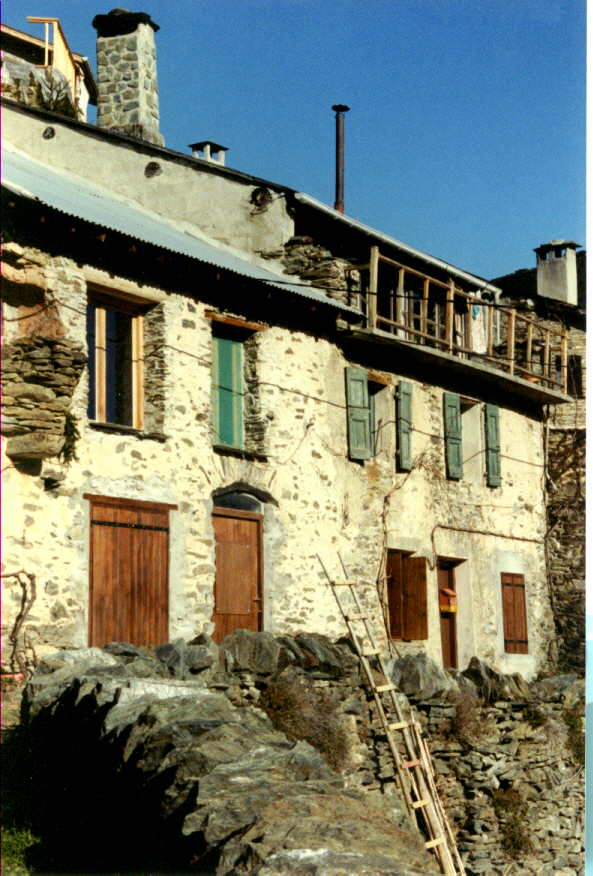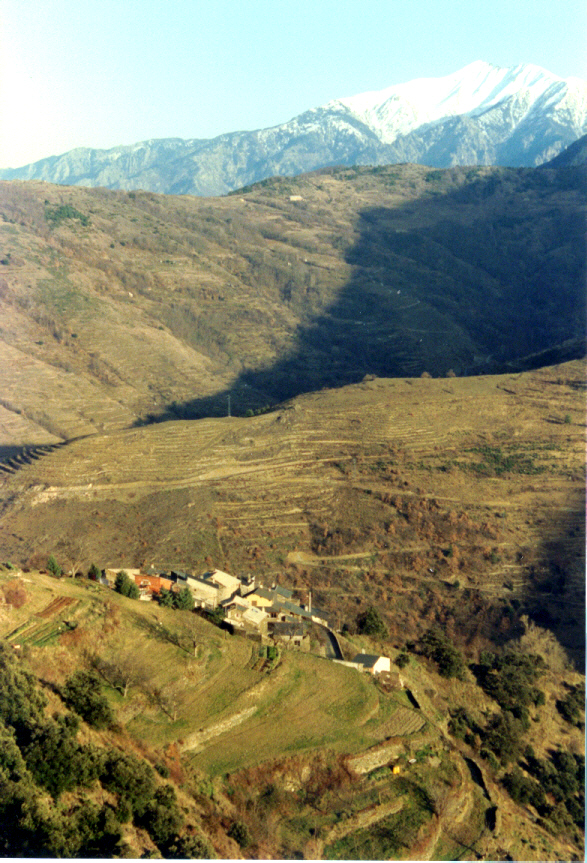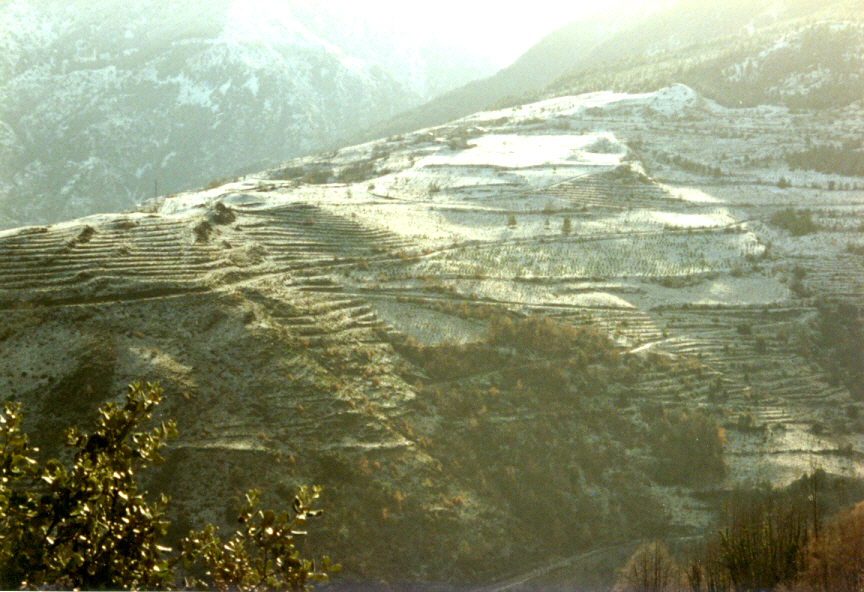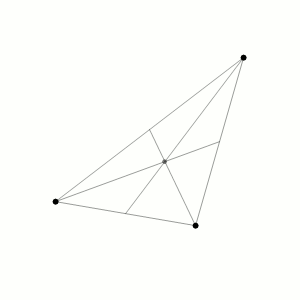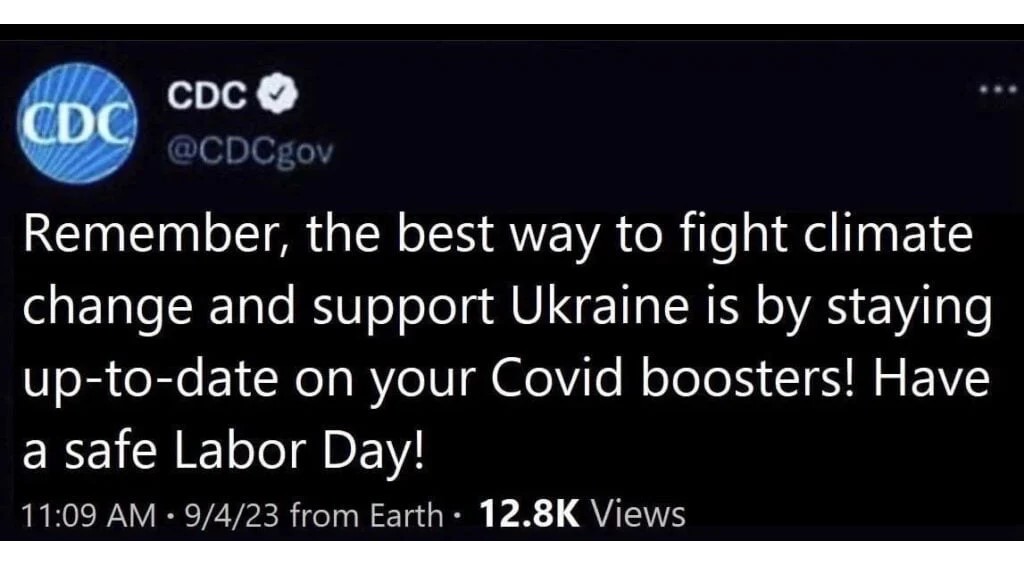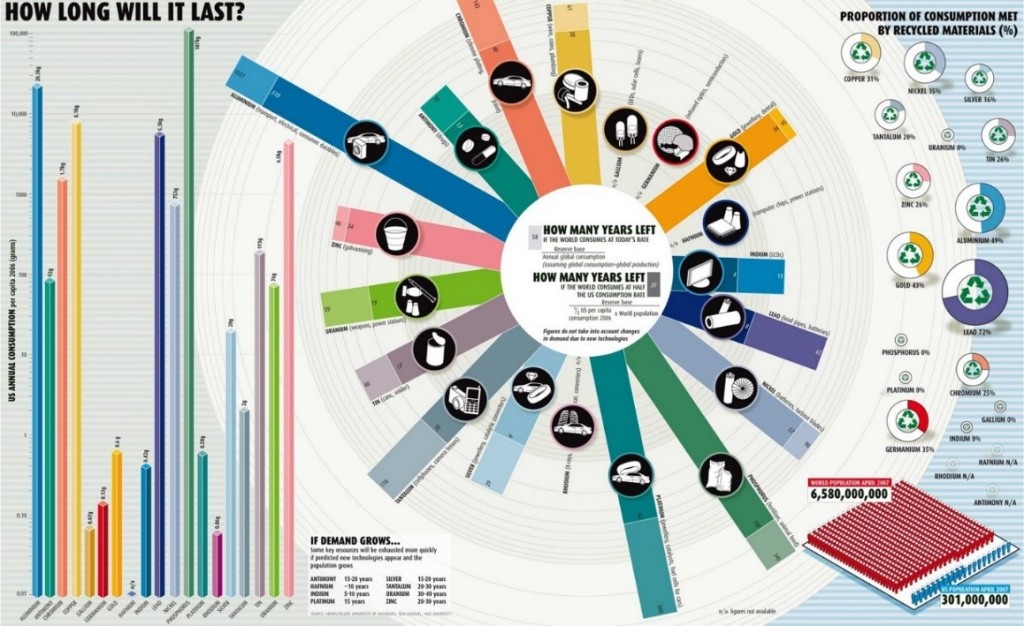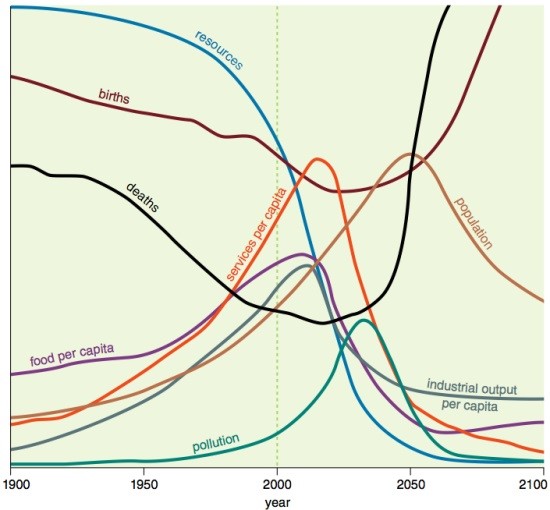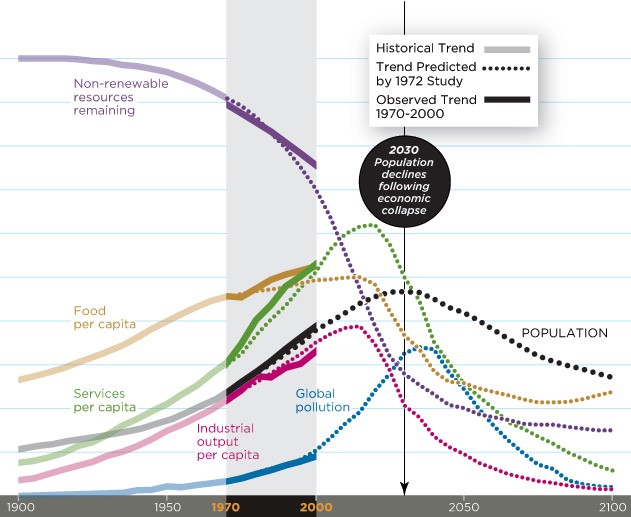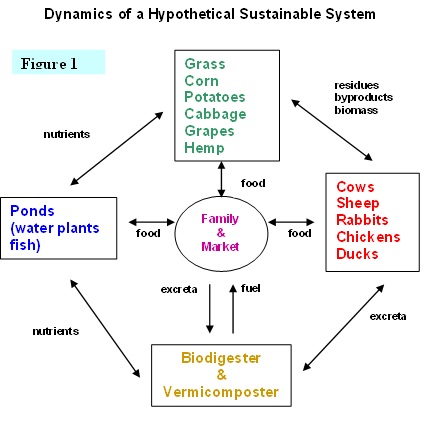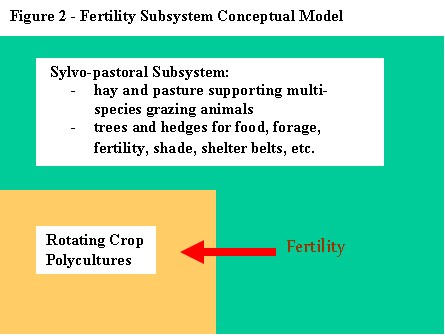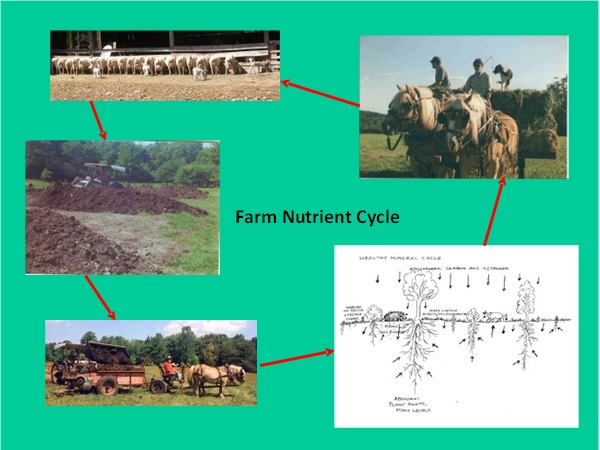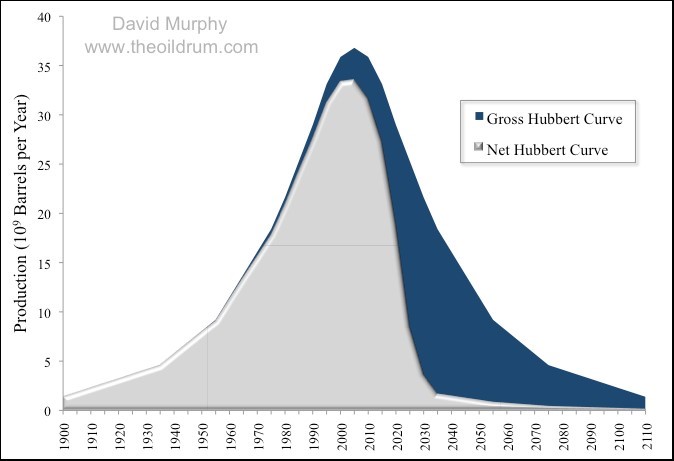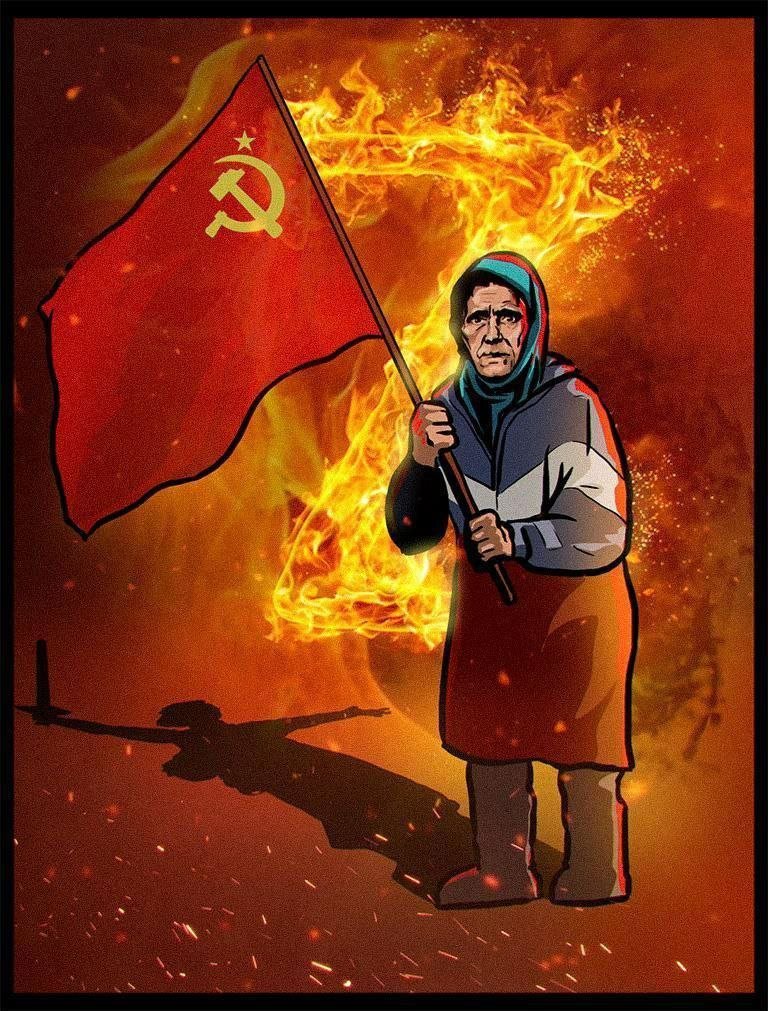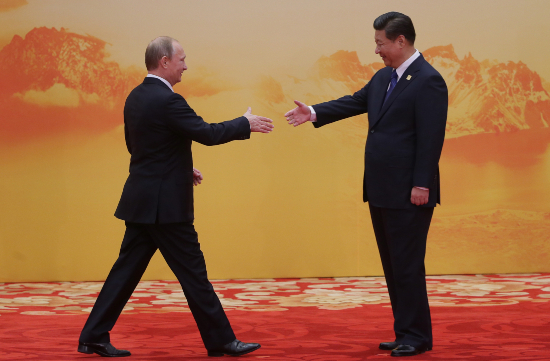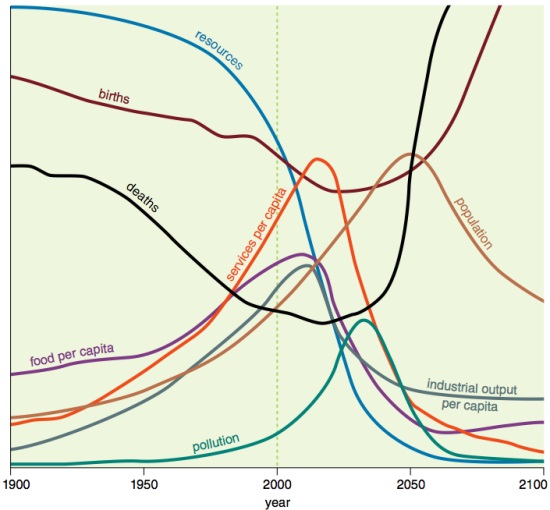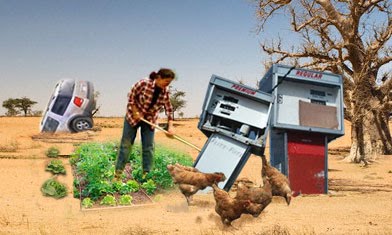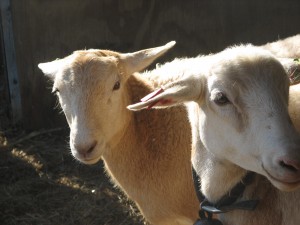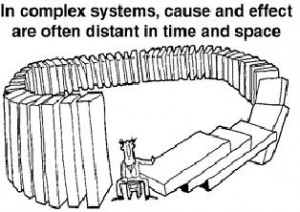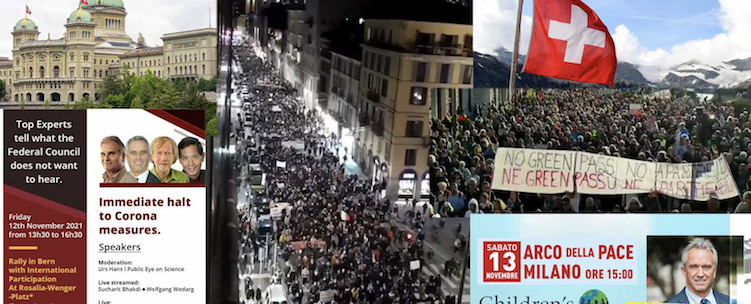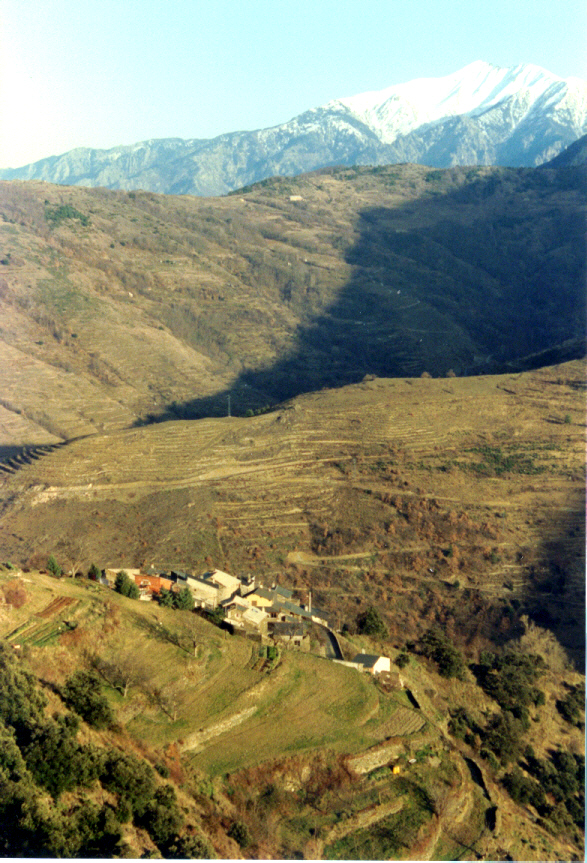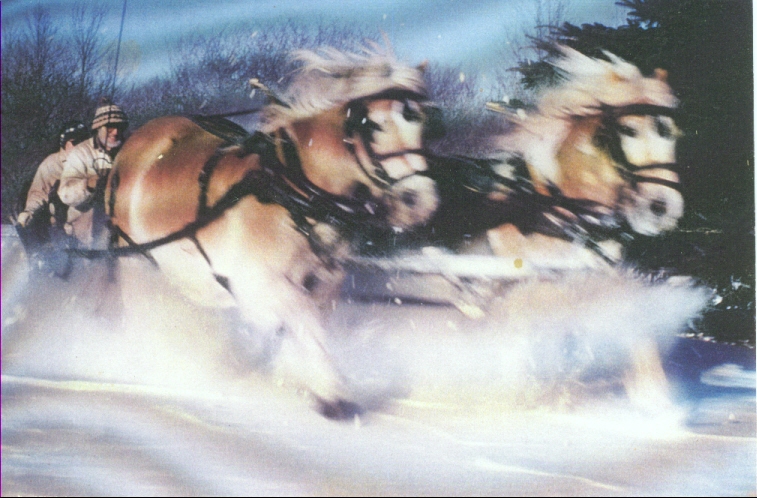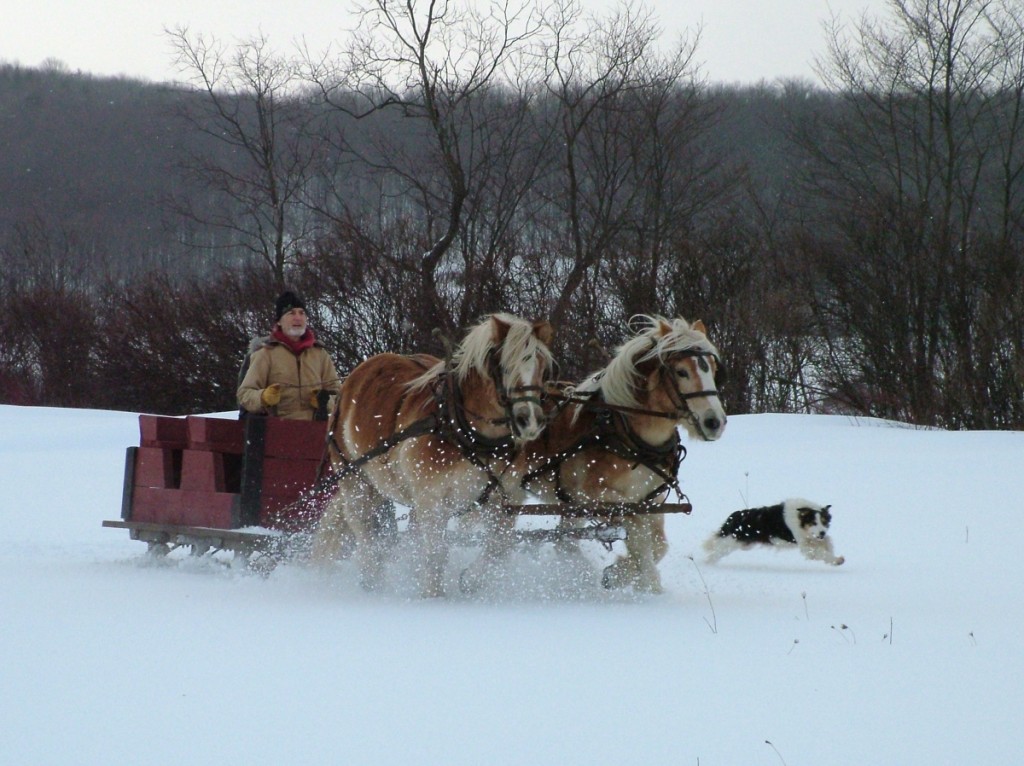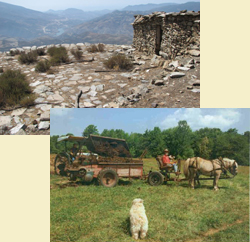Stories of my Life: A Swiss Scavenger Hunt
By Karl North | May 16, 2024
Joe Dassin was sweating bullets. He was scribbling frantically amid a pile of dirty coffee cups on scratch paper that he had covered with algebraic calculations. We were the only people in the Buffet de la Gare (train station restaurant) of the sleepy little Swiss border town of Chiasso, a couple of blocks away from Italy. Apparently this route south was little traveled in November.
Joe and I were trying to solve a quadratic equation that we presumed would divulge a telephone number which, in turn, would inform us of the next stop in a game that had sent competing teams of junior and senior class boys from two Swiss secondary schools on a four day adventure that was taking us all over the little alpine nation. The sole employee on duty in the station café watched us from his post behind the espresso machine with amused indifference. He had generously provided the paper napkins on which we were doing our calculations.
“Getting anywhere?”
Joe gave me a dirty look that said no. US high school algebra offered only brief exposure to quadratic equations; the experience had not stuck, and I had all but given up working on the problem. Joe, on the other hand was embarrassed. At the end of our senior year at École Internationale de Genève he was to pass his ‘first bac’, a French secondary school national exam that requires an educational level equivalent to at least two years of college in the US. Although we were the same age, Joe felt that with the educational advantage of his European schooling he should have solved this math problem by now.
Although he had lived on both continents after his parents had separated, Joe preferred his European persona. He was proud of his Paris accent, his superior European schooling and his well-traveled cosmopolitan life. His attitude to Americans like me who were just beginning to discover Europe was mix of condescension and friendly tolerance. We all lived on the same hall in the junior and senior class boys section of the small Internat, or live-in population of Ecolint as boarding students called the school, the École Internationale de Genève. Although he tried not to show it, he was disgusted to be teamed on this adventure with three Americans who barely spoke French and whom he could beat using only one hand at “baby-foot”, the European table soccer that we played constantly in the Internat day room.
At that point early in my year at Ecolint I knew little of Joe and his background. A gregarious guy, he had been at the school long enough to gain some serious status and advantages. As manager of the school’s high fidelity sound equipment he kept it in his room to play music whenever it was allowed, and even illegally after hours thanks to the acoustic insulation he had installed to hide the sound from the proctors. I saw that he also played the day room piano every time he got a chance. When he was not speaking French, he spoke with a perfect American accent in a school where British accents were the norm among non-Americans. Gradually Joe and I discovered enough of our mutual interest in music to form an a capella quartet and teach ourselves to sing black church classics like Go Down Moses, Joshua Fit the Battle of Jericho and others. As such music was little known in Europe, we were asked to perform it in a school assembly where it was a great success. That was the start of my dawning awareness that Europeans appreciate African-American music far more than most Americans.
Only years later when Joe had become a French pop star did I learn enough of Joe’s extraordinary family history to be sorry that I had not known it at the time. Born in the US of American citizens, he moved to France only when his father Jules, a successful film maker, was blacklisted in the McCarthy witch hunts that destroyed many political, academic and artistic careers in the early 1950s. Jules Dassin’s films departed from the usual Hollywood fare devoted to the petty quarrels of the affluent classes; instead they celebrated the rough and tumble life of the US working class with a realism that the self-appointed censors of the witch hunt deemed un-American. Barred from work in the US, Jules found his film-making style embraced in France, but the move to Europe split up the family, leaving Joe’s mother back in the US. Jules Dassin’s great French success, Jamais Le Dimanche (Never On Sunday) gave him back his film career, and he married the star of the film, Greek actress and activist Melina Mercouri. After Ecolint, Joe tried college in the US, intending to major in anthropology, but eventually quit and returned to Paris where he acted bit parts in his father’s films and started his singing career.
Joe and I were tired. None of our team had slept in a bed the night before, the first day of the scavenger hunt, due to a move that initially put us ahead of all the other teams in the competition. It had ended in a fiasco that kept us from finding a hotel room and gained nothing on the other teams.
“Let’s get our Italy passport stamp and call it a day” Joe said regretfully. “We need to make contact with the other two, let them know we’re stuck and decide whether to call the emergency number to the game organizers and throw in the towel.” We walked the short distance to the Italian border on the edge of town, crossed over to get the Italian stamp in our passports, then turned back through customs to the Swiss side as the customs agents of both nations watched us with quizzical aplomb.
The creators of the game that we were experiencing called it Le Concours de Suisse. It consisted of a series of messages containing clues that sent us from one location to another across the country. In each location we were to search for clues to a new message that contained new instructions, usually somewhat hidden (as behind a quadratic equation!), that would send us on to other destinations. The adventure was designed to put teams of high school juniors and seniors on our own with a Swiss rail pass and barely enough pocket money to cover food and lodging for the duration of the game, to teach us teamwork and to let us experience a bit of Switzerland in a novel way by sending us traveling around the country to find the next clue to the next destination in the game.
Yesterday’s instruction had been to gather passport stamps from all countries that adjoin Switzerland and to solve the equation that would give us the clue to the next destination. Our team decided to split up the work, and the two brothers from Big Sur went off to Germany and Lichtenstein respectively while Joe and I went to the Italian border and worked on the equation. We were to rendezvous at a central point, the Buffet de la Gare in Zurich when we had each finished our part, which if successful would take us on the next step in the game.
But to return to the episode of the sleepless night. The first day, all teams started from Geneva. Each received a message directing the teams, at intervals so that teams would not meet, to the next location. The message was only a single proper name. Frantic research on our part finally revealed it to be the name of an obscure downtown café. We filled backpacks with snack food cribbed from the school kitchen and headed downtown on the trolley, an excellent system of public transport that went everywhere in the city and even across the French border to Annecy, several miles away. A search of the café at first divulged no clue as to the next message. We were getting anxious. Some of the café regulars eyed us warily, some with amusement. The juke box was playing. Curious about what music a Swiss juke box offered, Neal, one of the California brothers, looked over the titles.
“Hey, here’s a tune titled Ecolint!”
“Play it, for chrissake!,” yelled Joe. The bartender, in on the game, laughed. Bingo. The message in the tune directed us to the next location in the game, a castle in ruins on a hill overlooking Sion, a town over a couple of hours away by train in the upper Rhone valley beyond Lake Geneva. For a while we relaxed, enjoying from the train window the spectacular alpine vista across the lake.
By the time we reached Sion in the upper Rhone vineyards and hiked up the side of the valley to the castle, all the other teams were already there, busy trying to decipher the next message. It was a message in code from car headlights located on the other side of the valley. No one was getting it. I looked at the blinking lights. It had to be Morse code.
“I can do this!” I exclaimed. In an earlier teenage obsession with electronics, I had built some amateur radio equipment and learned enough code to get the legal license to operate a transmitter. I quickly repeated the letters I saw in the lights to a team member, who wrote it down and read off the message to the rest of our team, huddled in secrecy away from the other teams. The message was simple: “Come to the lights”.
We agreed on a plan to sneak off quietly like we’re going back to town, then short cut directly down across the valley toward the car headlights. We jumped fences and crossed vineyards whose grapes, I learned in later life, made some of the best red wine in Switzerland. Unfortunately we had not counted on an encounter with the Rhone River. When we reached it, there was the car on the other side, still blinking its Morse code. But no bridge. We were the first team there, but on the wrong side of the river. By the time we bushwhacked our way through the fields to the only bridge, which was back in town, and followed the Rhone to the car, it was nearly midnight. The organizers – our teachers – told us all the other teams had finally read the message, come to the car (the right way) and returned to town to find hotel lodging. We were the last, and they were tired of waiting.
“What took you so long?”
They shook their heads in weary amusement at our story.
“You might not easily book a hotel room this time of night.”
They were right. Swiss rural towns run on rigid Calvinist clockwork like the trains and most everything in Switzerland. The town of Sion was closed and locked for the night. No one would answer our knock at any hotel door. Quelle fiasco! The only building open was the train station, where we thought to spend the night sleeping on the waiting room benches. At least we would be out of the increasingly frosty November night. No sooner had we settled on the waiting room benches but the station master woke us to say that the station was closing until 6 AM and sent us back outside. Next to the station were two brightly lit phone booths, almost the only lights in town at that hour, but not locked. We split up, two to a phone booth, and survived until dawn on shared body heat and food we had brought.
There’s not much left to tell about our scavenger hunt story. Joe and I shot much of our stipend on a good dinner and lodging in Chiasso. He introduced me to café kirsch, a Swiss version of a potent combination of caffeine and alcohol that is common in Europe: café cognac in France, café schnapps in Germany.
My initiation to café kirsch was an early, albeit minor example of a long series of encounters with European traditions whose historical depth and richness stretch back centuries and rest on a foundation in the ancient civilizations of the Orient and India. Over the years I experienced a growing awareness of how little of these traditions and their accumulated wisdom crossed the Atlantic in the mental baggage of Europeans who colonized the New World. As I gradually discovered, many European traditions reveal a time-tested maturity that lends them a quality that I rarely see in their US equivalents. I see this quality across the whole range of European culture, be it culinary, architectural or agricultural, or less tangible but more important, in customs of social and political interaction and in a sense of the importance of history to an understanding of the present. Why did the emigrants to North America see so little value in these traditions that they left so many of them behind? Of course the incessant material expansion that marks the American Way of Life fascinates Europe, but as they know from history, it takes more than physical wealth to build a civilization. Now, nearly 60 years after my Swiss introduction to Europe and after ten years living and working in French-speaking countries, I see more than a little truth in the view common on the Continent that the US is still an infantile society.
We reconnected with the rest of our team in Zurich the next day. Knowing we had already lost the game, we enjoyed a leisurely brunch in Zurich’s train station Buffet de la Gare which, often like the trains themselves, offered three classes of service, a concrete example of European class structure. My still vivid recollection is that even in the third class restaurant where our meager finances confined us, the quality of the service was impeccable, and eye-opening for me – white table cloths, silver dishware, hovering waiters, etc.
We were the only team to fail to finish the game. That did little to dampen our exhilaration at the experience of four days on our own, traveling sometimes on quaint little trains on narrow gauge rails that negotiated tunnels and sheer drops through magnificent Alpine scenery, frosted with the first snows of the season. As a team, we had seen bits of five countries, and had a lot to share.
Topics: Memoires | No Comments » |
Watering the Garrotxes: donkey farming in the French Pyrénées
By Karl North | March 7, 2024
A region of distinction in decline
French Catalonians commonly call their region Roussillon, but as one ascends from the coastal plain that stretches from the city of Narbonne to the Spanish border, first into the foothills, then into the narrow, steep-sided Tet river valley known as the Conflent, different landscapes take on different names. The last town with shops up the N116 national highway for 20 km. up a mountain gorge is Olette, population 600, where Larisa, my youngest child, received most of her elementary schooling. (Parenthetically, unhappy after her first exposure despite being ranked at the head of her class, Larisa quit school. After taking a year off playing in our mountain village with smaller kids, she reconsidered, and decided to return to her position as sole “étranger” in her class.)
A right turn off to the north from Olette takes one into the valley called Garrotxes, some of which borders on the township of Canaveilles, with its partly abandoned village perched at 3000’ along a ridge overlooking the Tet valley, where our family lived for most of the 1970s. Most of the rugged mountain terrain of the region had been under a variety of more or less intensive management until the end of subsistence farming communities circa 1960. But a decade later after the younger generation had left the mountains seeking an easier life, most of it had rewilded, and the locals called any wild place the garrotxes, which means “ the sticks” in Catalan.
Besides a school and a gendarmerie, Olette sports a restaurant, a café, a tabac, a pharmacy specializing in herbal cures and significantly, two dueling butcher shops. The family budget rarely allowed us to patronize either, even for “boudin”, or blood sausage, the cheapest next to tripe. However, the school sent its pupils to the restaurant, whose menu, created for the summer tourist trade, boasted local stream-grown trout and lamb chops, so my children ate meat daily.
Olette’s other distinctive landmark is its church, really a small cathedral, presumably because it was built to serve a wide region of mountain communities. Like most churches in a long-secularized France, it stood practically empty most days. Its young priest, Joseph, one of the three sons of the Flemish family Reymaakers (sp) who had relocated to the valley of the Garrotxes a generation before, was known locally as the hippy priest, for various reasons. One was his attractive assistant catechism teacher, who was rumored to be his girlfriend. Also, as young urban refugees began to filter in during France’s belated version of US sixties counterculture, Joseph, reduced mostly to circuit riding through the mountains, made several attempts, mostly rebuffed, to help the marginals, as they called themselves, settle in to mountain living. This put the priest in the unenviable position of mediator between the locals and the newcomers, who the remaining locals viewed as urban lightweights who would never last in a terrain so challenging that it had driven out most of their children.
Midnight mass on Christmas eve was one of the few times in a year when the Olette cathedral was packed to the gills, despite competition from the café, which held a rousing, inebriated bingo fest for the anti-clericals, a large population in southern France. Apparently, Joseph had learned that I had been studying classical guitar for several years, and decided to recruit me for a solo performance during the midnight mass. My little Bach prelude was reasonably successful, more because it was such a novelty at the annual midnight mass than for the quality of my playing.
Actually, my meager musical talents leaned toward choral singing and directing, so I offered to create a quartet to enhance midnight mass the next year with four-part harmony. In addition to my wife and myself, I recruited Helleke, a musician from Antwerp who lived in Llar, a hamlet in our township, in a house restored by one of Joseph’s brothers, whom she had married. I found a soprano to complete the quartet at the weekly farmers’ market in Prades, a meeting place of young newcomers to the region.
Looking to beef up the midnight mass that year, the priest was building what he hoped was an authentic Nativity Scene in the nave of the cathedral. I offered to lend my donkey, who was so old that some good hay next to the manger of the Christ Child would be enough to keep her stationary during the mass. The idea excited the priest at first, but then he backed away from the idea, fearing unexpected consequences.
Our quartet sang from the church gallery, hoping to sound like angels from the sky. The Reymaakers patriarch, a devout Christian who had built his own chapel on their farm, a promontory over looking the valley of the Garrotxes, voiced his approval of our choral performance as we exited the church after the mass. Hopefully this mitigated his unhappiness at the hippy priest reputation his son had gained, partly from fraternizing with us marginals.
A backstory
In the attempt to flee responsibilities of citizenship in a country that had used weapons of mass destruction to commit genocide and horrific environmental damage in poor, Third World countries of Southeast Asia, in 1973 I left an academic career path and moved with my wife and school-age children to begin an agrarian life in the small village of Canaveilles in the mountains of French Catalonia. The houses of the region, with their thick stone and clay walls and heavy slate roofs, are a testament to a bygone age of heroic struggle and tenacity in an intensely sunlit but difficult terrain, using primarily the simple materials that the mountain offered in abundance. Nearly abandoned after centuries of peasant subsistence farming, the village of Canaveilles, located at an altitude of 3500 ft, offered one of these houses and a barn, all attached to other houses in the clustered style of villages of old Europe. We bought the house and barn next door and began to rebuild it as we learned to farm the narrow terraces of the steep Mediterranean mountainside.
The irony of such a change of vocation was that my choice of social terrain, like the other dying peasant societies of the world, had become the intellectual focus of the anthropological discipline that four years of graduate school had trained me to study. However, having just escaped from an anthropological career, I was in no mood to consider the research possibilities of the remnants of Catalonian peasant life in my midst. Still, I suspect that the vignettes in this account cannot help but suffer from a residue of my previous intellectual life. Be advised, readers!
Canaveilles house and barn with solarized third floor and balcony
A first solar design experience
The house offered some ideal requisites of passive solar design. The front wall had full southern exposure to the intense sun of the region, but being two feet thick, kept out the both summer heat and the freezing temperatures of winter nights. The earth sheltered house has long been a favorite of energy efficient house designers. This house, in fact the whole street, was as if built to order. The north wall, chipped into the mountainside, provided the insulation equivalent of an endless earth berm. The side walls, shared with the neighbors, also supplied the high insulation values that are necessary to passive solar design. The mountainside behind the village sheltered it from the prevailing winds, including the Tramontane, a cousin to the dreaded Mistral, a three-day gale that often sweeps down the Rhone valley.
All these elements in combination with the forgiving Mediterranean climate – shirtsleeve temperatures on cloudless winter days – reduced the heat requirement and made our first solar design project easier. Compared to recommendations for thermal mass in the passive solar literature, the centuries-old, massive stone walls of this dwelling were overkill. And our rule of thumb learned in practice has been to cover as much of the south side of a house with glass as we could afford, then build in enough heat storage to handle the excess solar capture capacity of the south glass area.
Building on these advantages, we decided to raise the low garret third floor to become the main living space and glass in the front. Constructing the new living space was an exercise in the use of free and salvage materials, for our finances were no better than those of the remaining villagers. The river bank in the gorge below the village supplied free sand for the mortar to raise the walls. Wall stone came from ruins in the village. Rights as property owners gave us access to timber for beams and rafters in the village communal forest. Work parties of volunteers from around the region helped place the big beams, and helped with the heavy labor of removal of the old slate roof in exchange for room and board. In an abandoned commercial building in the region, we found windows at salvage prices, but large enough to be used as French doors, and installed them as the south wall of the living space. I include these details because they illustrate a low-cost approach to building (and to life) that will become increasingly necessary in the post-petroleum era.
The resulting passive solar renovation reduced firewood needs to less than a cord, which we could easily skid down behind a donkey from the forests above. We burned it in a small cookstove augmented by a fireplace I constructed in the local tradition, using a chestnut beam salvaged from the expansion of one of the Olette butcher shops. The chestnut was so old and dense that it struck sparks from the chainsaw.
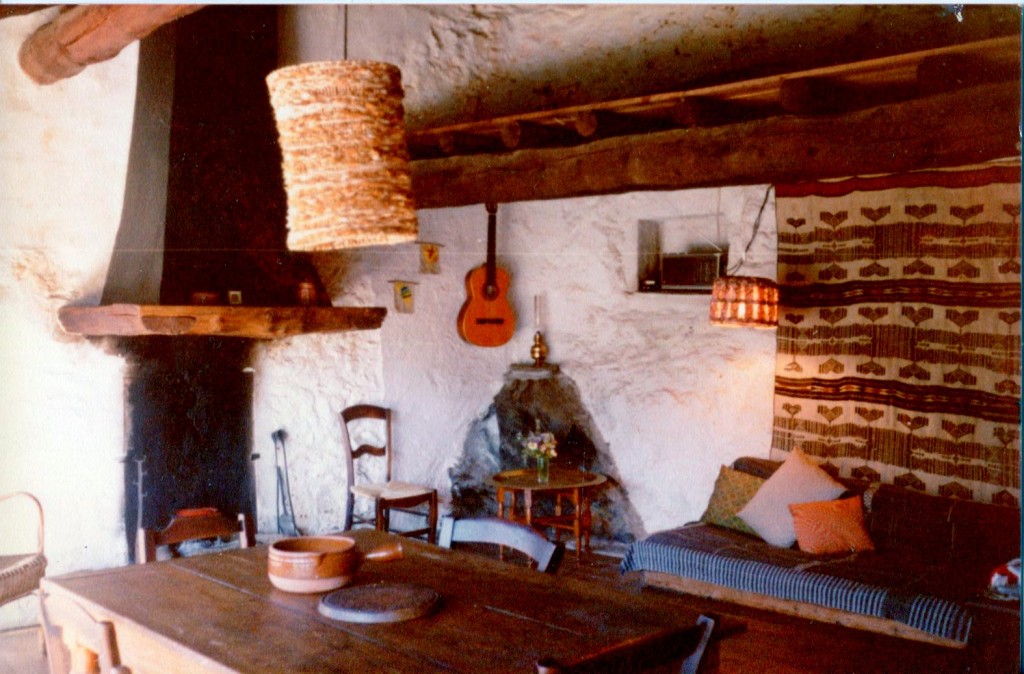
Having been brought up in wooden houses, we found the experience of living within the permanence, security, and quiet of massive masonry walls unforgettable. Similarly, the feeling of being almost outdoors that the wall of French doors conveyed, in combination with the balcony just outside affording a spectacular panorama of a gorge rising to often snow-capped peaks, made living in the renovated house in Canaveilles a special experience. The 10000’ peak in the picture, eastern anchor of the Pyrénées range is visible from much of Roussillon. Called the Canigou, it still retains some of its sacred quality in the region. Houses and even whole villages orient themselves toward the it if they can, and when villages celebrate the summer solstice with bonfires throughout the region, volunteers climb the Canigou with firewood to celebrate the solstice there.
Donkey farming
To survive on the south face of a mountain in a Mediterranean climate, human communities had to initiate seemingly superhuman changes in the terrain: stone-walled terraces on which to build a village and grow food, and an irrigation canal cut into the mountainside for ten kilometers back along the ridge to meet the Tet river at 5000’ altitude at the city of Montlouis.
Flatlanders hoping to last long in this environment face a steep learning curve of physical conditioning, where almost every activity includes a stairway up or down. My survival plan started with growing gardens and animals for food, skills in which I had some elementary experience. After surviving the vicissitudes of cooperative projects with unreliable partners, we had learned enough to be mostly self-sufficient on our own. But growing anything required running up and down the mountain to direct irrigation water to fields and gardens, and to graze the dozen ewes and their annual lamb crop in pastures at different altitudes depending on the season. I needed to manure upper terraces, skid firewood and hay down to the village, and climb to the summer pastures.
I decided we needed a donkey. We also needed to acquire farmland to gain residential rights and benefits, both in the village and in France. As it happened, my friend the horse butcher, who held the second largest property in the township (after the mayor), managed to provide both. For $10 he offered me the aged donkey he had planned to slaughter, and for $75, annual rental of all his land, which gave me full irrigation rights.
The horse butcher delivered the rescued donkey, a coal-black animal, to me in the village at midnight, presumably after one of his regular drinking bouts, so I called her Mitjanit, ‘midnight’ in Catalan. I adapted some pieces of abandoned harness to allow Mitjanit to carry me, pull a travois (later fitted with wheels) and skid firewood tree trunks. At this point I thought we were equipped to begin to grow most of our food on the terraced mountainside, except for water.
Watering the Garotxe
Societies that depend on irrigation systems are so distinctive that some anthropologists have called them hydraulic civilizations. I discovered that this was true even at the small scale represented in the township of Canaveilles. Common to all such societies is a need for a water administration that maintains a complex man-made irrigation system and polices the sharing of water among the users. In our village it consisted of a committee elected by the land owners who had irrigation rights and a person hired each year to manage the canal and distribution of its water. The committee collects a tax from the users to pay for the annual cleaning and repairs, and to pay the canal manager. The cleaning crew often consists of users whose pay defrays the tax. Cleaning occurs in the early spring, after which the system is open for the growing season.
Like our village in the Pyrénées, small communities in the US south west created similar systems centuries ago. My wife and I once spent a month working on a farmstead on the side of the Sierra Nevada, a mountain range in Andalucia in southern Spain, watered from an irrigation system that dated back to Roman times, which the later Islamic civilization greatly refined.
Also characteristic of irrigation civilizations is the social bond the need for water creates, along with endless feuds over its management. This bond can be stronger than anything else that binds the community, including politics or religion. In Bali, religious control of water dropping through a series of rice paddy terraces has created a system that has lasted a thousand years, administered by priests in water temples erected at different levels of the irrigation system.
When our family settled in the village in 1973, the irrigation system suffered from lack of help. The year-round residents consisted of Parisian couple exiled to south of France as penance for having collaborated with the Nazis, a couple from the coastal plain who had fled a grocery scandal, and the only remaining local, an old woman who kept to herself. Both families included a married child and small goat herds. Until we arrived, only the Parisian actually needed the canal water for his gardens from the seasonal canal. Two spring developments with their troughs at each end of the village originally provided water for the residents. Now a cistern above town caught spring water and piped it to the houses. But without infiltrated water from the irrigation system all these springs dried up in summer. So everyone, including the summer people who still had ancestral abandoned irrigation land and paid the water tax, needed the canal to run.
The village water supply had not always depended so heavily on the canal. According to the Parisian, he was now the acting mayor because the elected mayor had sold the water rights to a hydroelectric company in return for a cottage and lifetime employment in the company down in Olette. The company had dug tunnels under the mountainside that drained the water, permanently lowering the water table. Another simmering scandal.
My first spring in the village found me learning to clean the canal with an unsatisfactorily small crew, most of whom were experienced locals who looked with disdain on the foreigner and chatted mostly in Catalan. The cleaning started at the head of the canal, which at 5000’ was still in wintry weather. As we worked for a week along it toward the end at 4500’ over the village we thus experienced an enjoyable rapid change of season. Half way along a shelter had been built shaped like an igloo of rocks gradually closing in at the top. Built on a promontory jutting out from the ridge, it offered a beautiful view of the Tet valley in both directions. The day the work party neared the shelter, I decided to bring bedding to camp out. The locals tried to scare me, saying the rock cabin was infested with vipers. I said I would take my chances, since unlike the rest I would not have to hike in and out for the next two day’s work.
Water wars
After its long, perilous itinerary cut into the side of a steep ridge, the canal proper ends far above the village in the summer pastures. Then a branching system of “rigoles” descends to eventually serve every property holding irrigation rights. A main split occurs where a large piece of shale with two equal holes set vertically across the rigole sends water into separate watersheds. Stories abound of blood shed at this location when angry irrigants hiked up, only to find one hole unlawfully blocked. Indeed, early in my adventure in learning irrigated agriculture I encountered a blocked hole at the fateful site. When I confronted the Parisian, who was the only other irrigant in the village at the time, he blithely suggested that debris floating down from the canal must have blocked the hole. Later, a water feud erupted between Canaveilles and Llar, its sister hamlet upstream, when the gardeners at Llar diverted the whole canal into their fields for a week. This provoked heated phone talks from the Parisian, who was the canal manager that year, to culprits at Llar.
Water supply was only one of the challenges encountered in the attempt to feed our family from our crops. A large planting of potatoes destined to feed ourselves and a couple of pigs as well suffered a heavy infestation of potato beetles despite good irrigation that year. The problem was that the soil was too depleted to grow a crop that could protect itself from the predators. I was to encounter the same worn-out soil later while reclaiming abandoned fields in upstate New York, and again when I restored a small farm to retire on in the state of Maine. (Eventually I developed a soil regeneration complex that integrated management-intensive grazing to maximize grass productivity and soil organic matter, and careful manure management with a bedding pack and composting to retain nutrients. The system I evolved is described in Illustrations and Challenges of Progress Toward Sustainability in the Northland Sheep Dairy Experience).
A number of other growing experiments failed or suffered from an unreliable water supply or predators ranging from insects to wild boars. My most successful food source became the gardens in the terrace just below our house and adjoined sheep barn. They benefitted from a compost pile from manure dug out of the barn and thrown over the wall, and from water I diverted from a rigole just above the village, using a garden hose and a filtered funnel. One of the gardens, located in a barnyard manured for centuries, well-watered in the hot Mediterranean sun, grew the largest yield of potatoes that I have ever produced. Crops in upper fields occasionally did well, but required the donkey Mitjanit to climb up through the terraced fields transporting compost, a job she knew well but did not relish at her advanced age.
Marginals and their Discontents
Like most of their counterparts in the US, European back-to-the-landers that I encountered arriving in numbers in the South of France in the 1970s were ill-equipped for life on the lam from urban civilization. Attracted to the sunny Mediterranean and its abandoned villages, a few with manual skills set to work restoring crumbling houses and barns. Even fewer had any notion of how to grow their own food. Others just sat in the sun until their cash ran out.
Two enterprising marginals I befriended succeeded for a while. One couple, after bouncing around living in caves and borrowed municipal buildings, purchased a property high above Canaveilles that provided a year-round spring and easy access to the road from the village up to the summer pastures. They built a little cabin and created a small grass-fed rabbit project selling dressed rabbit to the butchers at Olette. We shared machines – they borrowed the tiller the horse butcher had loaned me and I used their chainsaw. As we both were on a steep learning curve in machine maintenance, the implements suffered considerable damage at first. Then, wanting to enjoy aged pork, a delicacy of the Mediterranean that I had discovered on a student year in France, but little known to most Americans, Bernard, the husband, and I began a cooperative pig project. When we drove down to the seacoast to buy two sows, sensing something amiss, I asked Bernard if he had brought cash for his half of the deal. No, he confessed he expected me to pay for both, then agreed reluctantly to reimburse me. After a few days he abandoned the project altogether, leaving me with two big sows to feed. The pitfalls and joys of my pig project warrants its own story that I will tackle later in this tale.
The other couple, well capitalized Parisians, built a goat dairy lower in the Tet valley on relatively flat terrain, acquired hay lands and machinery, and made excellent cheese, all of which sold well at the weekly farmers market in Prades. They were gregarious, getting to know many people in the region, and hiring other marginals to help with haying and other chores, They introduced me to people at the local monastery, which was hosting several artist refugees from fascist Spain. One, a muralist, gave me my first sheep dog, a half-breed that we named Milou. The daughter of another refugee became my student when I had started giving introductory lessons in classical guitar. Eventually we began trading whole wheat bread my wife baked for gallons of milk from the goat dairy, thus adding a relatively cheap source of dairy to our diet. Their goat dairy, while successful for a while, languished when the husband got bored, retreated into his cannabis oil heaven and left all the work to his wife.
Cattle Wars
French fascination with the life and legends of the American far west – its cowboys and Indians, its cattle rustling gangs and the posses formed to fight them – has outlasted anything surviving in the US itself. An investor group in the north of France saw the chance for a low-cost cattle ranching scheme. Calling itself La Compagnie de la Californie, it made a deal with the mayors of our village and a neighboring township to put hundreds of cattle on our mountains under the management of a single, low-paid herdsman. Since the cattle were pastured on private property as well as municipal commons, the company sent letters with paltry rental payments to the land owners. The barely managed herd ranged far and wide, breaking down centuries-old terrace walls, rampaging through our crops and village streets, and many dying from brucellosis, which was still endemic in the region. The scam was justified as forest fire management, a legitimate concern in the no longer grazed grasslands and forest of the mostly abandoned townships.
As it happened, recent fire had occurred in our township. Presumably from the cigarette of a passing motorist, the fire raced up the steep forested mountain, burning mostly understory brushwood. The Parisian and I were able to stop it where the forest joined the summer pasture, and little was left to do but stamp out small fires in patches of thicker underbrush. The local fire brigade arrived in their elegant uniforms just in time see the last of our fire fight in the now smoking hillside.
Meanwhile, along with arrival of the cattle herd, our village and the whole region had seen an influx of marginals, including several households just in our village, who had begun to use the land for their crops and livestock. I was growing crops and pasturing sheep on property I rented from the horse butcher, second only to the mayor in the size of his holdings. The local gendarmes, regarding the marginals as rootless riffraff prone to cause trouble, were slow to respond to our repeated complaints of cattle damage. The mayors, fearing the loss of their cut of the cattle profits, fought back.
The chosen setting was the secluded little hot spring at the edge of the Tet, a quiet stream at that location. Offering both hot and cold bathing, it saw frequent visits by marginals, whose restored peasant dwellings had never included bathrooms. One day when a large group of us from the village hiked down to the hot spring, someone alerted the police, who appeared suddenly on the other side of the river to announce that our group, which included mothers and babies undressed for the bath, were under arrest for “atteinte à la pudeur publique”, or assault on the public’s chastity, a difficult crime to pull off in an isolated location never visited by any but a rare passing trout fisherman. The immediate outcome of this comic caper was a day the group had to spend at the Gendarmerie d’Olette, while embarrassed police watched mothers nursing and changing diapers on office desks. Finally, they dismissed us to await trial at the regional capital, Perpignan near the seacoast.
Convoked to stand trial many months later, the group discovered that the father of one of the young mothers, a successful apple orchardist in our vicinity, had engaged a lawyer. In our defense he exposed the hypocrisy of a justice system that prosecutes bathers in a secluded gorge while allowing Scandinavian vacationers to cavort naked on the beaches of Roussillon, presumably because they benefit the local tourist economy. The judge ruled us guilty with suspended punishment.
The cattle war accelerated, gaining the attention of local leftists who, to my surprise, often dominated politics in rural towns in the south of France. In our support they organized an attack on the government agency that had sold land to the cattle cartel, thus giving the cartel a foothold in our township. Government hearings revealed gross mismanagement, which weakened the Compagnie de la Californie and forced some reforms. Twenty years later when we returned to Canaveilles for a visit, the cattle cartel had disappeared.
Adventures in Jambon Land
Any farmer who manages to produce more than his family’s bare subsistence knows the value of a pig. Beyond its value as food and cooking fat, this omnivore exists to conserve in its body anything the farm produces that cannot be immediately consumed or sold. The same way livestock of all kinds have functioned for pastoralists for thousands of years, a pig serves as a living piggy bank, a savings account to draw on in times of need. And like the interest rate in a bank account, a sow can make piglets.
Even more important, almost all parts of the pig can be preserved without refrigeration, by salt curing and ageing for as much as a year or two, and whose flavor in my view is superior to cooked pork. Because the process cures the meat of trichinosis, the parasite that has caused Islam and Judaism to prohibit pork, aged ham has long been the cornerstone of good eating in the Christianized areas of the Mediterranean.
Having experienced the fine flavor of aged, uncooked ham during previous trips to the region, I decided to learn how to process a pig. Francis and Francoise, a younger couple who we helped construct makeshift living quarters next to our donkey shed, eagerly agreed to split the cost of a pig, as Francis’ family had relocated to France from Spain, reputed to produce the highest quality cured ham.
An expedition up the valley to La Cerdagne, a hanging valley at 5000’ whose large farms could afford to grow extra pork, netted us a 250 lb. animal. As luck would have it, the Figuères, an elderly couple who spent their weekends and summers down the street in their ancestral home, agreed to teach us the processing skills. Monsieur Figuère’s trade as a driver often included pig slaughter as a side enterprise. On the appointed day we gathered the specialized tools, all of which had come with the purchase of our property – a wooden trough in which to scald the pig and loosen the bristles, a cast iron cauldron to boil the water for scalding and later to cook the blood and white sausages, scrapers made from pieces of a broken scythe blade. We had been instructed to get up early to build a fire under the cauldron.
Monsieur Figuère brought a crucial implement – a wood handled steel rod with an arrow shaped end bent around into a hook. Inserted under the jaw, the pig was under complete control, and was quickly placed on the upturned trough for bleeding. My wife then received instruction in the wife’s traditional duty, which was to catch the blood in a bowl and stir it to prevent coagulation. The bled pig was placed in the trough with boiling water, scraped clean of bristles and dehooved with the hook. Then it was hung, gutted and split along the backbone. While the carcass was cooling for butchering, Mme Figuère fed everyone a lunch of the organ meats and aioli, the local garlic mayonnaise.
We spent the afternoon cutting and preparing fatback, hams and sides of bacon for salting, cutting the rest for grinding into sausage, and cleaning and soaking the intestines in the upper spring (la Fontaine) for stuffing. The next day the horse butcher ground the sausage and lent us his stuffer, and we spent the rest of the day salting and stuffing. After curing time, which varied from two weeks to a month, we enjoyed months of home processed animal protein.
Now we knew how to make ‘jambon de montagne’, the next project was to grow our own pork. Left with two large, hungry sows from the fiasco of the pig cooperative, the extra potatoes, mangles and wheat that I had grown began to disappear quickly as we boiled it into pig feed in the cauldron, a traditional way of making pig feed in the region. I tried to add garbage from the tourist restaurant and spa down next to the main highway, but separating the edible from other trash was soon too much work.
The butcher I knew as a customer for my lambs was slaughtering over a dozen lambs twice a week at the municipal slaughterhouse in Prades and throwing away most of the guts, so he let me spend the morning cleaning them in the stream running through the building and take a trash can of tripe home to add to the pig cauldron. A delicious aroma from the resultant stew permeated our end of the village. We even fished out some of the tripe to try ourselves. The carnivorous diet made the sows begin to eye us as food, and we were reduced to quickly throwing their feed into the trough and making an escape.
Our next project was to make piglets. I loaded Virginia Slim, the more friendly sow into our truck and drove her down the valley for a couple of weeks of mating with a boar. The eventual result was an oversize litter of 11 piglets, from which we were able to save only enough for the sow’s 9 spigots. The sale of weaned pigs at a livestock market day in Olette was a net loss except for the two the goat dairy bought, deciding us to end the pig project and convert the sows to jambon de montagne.
Liberated Ecclesiastics
In a Europe where a secular age had emptied the churches, ecclesiastics at loose ends cast about for new flocks with which to ply their trade. The challenge of the unemployed ecclesiastics expressed itself in our locale in two ways. Joseph, ‘the hippy priest of Olette’ who I introduced earlier in this account, tried convoking local marginals to a dinner get-together where he hoped to give some direction to their sudden appearance in his Parrish. The marginals rebuffed his efforts with reactions that ranged from amusement to anticlerical disdain. Joseph also rounded up budding juvenile delinquents and other street kids from the coastal towns for a day trip in the mountains to assist our spring canal cleaning. The locals on the cleaning crew, even more anticlerical than the marginals, were openly sarcastic all day. As one remarked in an aside, priests are the people who wear skirts (at least still when saying mass) and don’t work for a living.
The other manifestation of clerical liberation struck closer to home. On settling our family in Canaveilles we discovered that the meager village population included a resident nun. Frustrated with quiet convent life, Sister Marie-Christella had ventured out into the fast-changing world. She had adopted our village as her terrain of battle and launched a project to bring it back to life. As one of her first ventures, she obtained our use of an empty house and barn as temporary living quarters and midwifed negotiations with the distant owner for its eventual purchase.
As the village marginal population swelled, she focused on its children, first bringing them clothing from church charity donations. Then, to celebrate the village’s annual saint’s day, she trained them along with others from Olette for a grand performance in the village plaza of dances from different French folk traditions, replete with traditional costumes. She even dragooned me into organizing the kids to perform Catalan folk tunes.
Living her role to the hilt, Marie-Christella inhabited a tiny hermitage apart from the village, acquired a donkey to haul water to it, and wore sandals on bare feet year-round, presumably to symbolize her ascetic lifestyle. The Parisian complained that she was usurping his role as acting mayor, and accused her of being independently wealthy.
Staked alone in her pasture for any length of time, my donkey was pining away. Silent for days, she eventually let loose with a long and loud complaint of heehaws that reverberated through the mountains. I offered to stake the nun’s donkey with my Mitjanit, so that she would have company. In exchange, I had the use of her younger animal for fast trips up the mountain when I started milking ewes stationed to graze the summer pastures.
Afterword
Our séjour in the Eastern Pyrénées lasted nearly seven years and included many adventures that I have not recounted here. Our children continued reading and writing in two languages and performed song and dance in several French folk traditions. René learned to bake cakes and become a soccer star. Larisa learned to tolerate school as a foreigner at the top of her class.We learned a set of low-tech subsistence farming and homesteading skills whose integration into a low input farm design enabled us eventually to make a living at small scale farming later in the US. The memories of living in stone houses with long mountain vistas marked our attempts to build a farmstead on a hilltop in the rolling hills of upstate New York.
Watering the Garrotxes: donkey farming in the French Pyrénées
Karl North February 6, 2024
A region of distinction in decline
French Catalonians commonly call their region Roussillon, but as one ascends from the coastal plain that stretches from the city of Narbonne to the Spanish border, first into the foothills, then into the narrow, steep-sided Tet river valley known as the Conflent, different landscapes take on different names. The last town with shops up the N116 national highway for 20 km. up a mountain gorge is Olette, population 600, where Larisa, my youngest child, received most of her elementary schooling. (Parenthetically, unhappy after her first exposure despite being ranked at the head of her class, Larisa quit school. After taking a year off playing in our mountain village with smaller kids, she reconsidered, and decided to return to her position as sole “étranger” in her class.)
A right turn off to the north from Olette takes one into the valley called Garrotxes, some of which borders on the township of Canaveilles, with its partly abandoned village perched at 3000’ along a ridge overlooking the Tet valley, where our family lived for most of the 1970s. Most of the rugged mountain terrain of the region had been under a variety of more or less intensive management until the end of subsistence farming communities circa 1960. But a decade later after the younger generation had left the mountains seeking an easier life, most of it had rewilded, and the locals called any wild place the garrotxes, which means “ the sticks” in Catalan.
Besides a school and a gendarmerie, Olette sports a restaurant, a café, a tabac, a pharmacy specializing in herbal cures and significantly, two dueling butcher shops. The family budget rarely allowed us to patronize either, even for “boudin”, or blood sausage, the cheapest next to tripe. However, the school sent its pupils to the restaurant, whose menu, created for the summer tourist trade, boasted local stream-grown trout and lamb chops, so my children ate meat daily.
Olette’s other distinctive landmark is its church, really a small cathedral, presumably because it was built to serve a wide region of mountain communities. Like most churches in a long-secularized France, it stood practically empty most days. Its young priest, Joseph, one of the three sons of the Flemish family Reymaakers (sp) who had relocated to the valley of the Garrotxes a generation before, was known locally as the hippy priest, for various reasons. One was his attractive assistant catechism teacher, who was rumored to be his girlfriend. Also, as young urban refugees began to filter in during France’s belated version of US sixties counterculture, Joseph, reduced mostly to circuit riding through the mountains, made several attempts, mostly rebuffed, to help the marginals, as they called themselves, settle in to mountain living. This put the priest in the unenviable position of mediator between the locals and the newcomers, who the remaining locals viewed as urban lightweights who would never last in a terrain so challenging that it had driven out most of their children.
Midnight mass on Christmas eve was one of the few times in a year when the Olette cathedral was packed to the gills, despite competition from the café, which held a rousing, inebriated bingo fest for the anti-clericals, a large population in southern France. Apparently, Joseph had learned that I had been studying classical guitar for several years, and decided to recruit me for a solo performance during the midnight mass. My little Bach prelude was reasonably successful, more because it was such a novelty at the annual midnight mass than for the quality of my playing.
Actually, my meager musical talents leaned toward choral singing and directing, so I offered to create a quartet to enhance midnight mass the next year with four-part harmony. In addition to my wife and myself, I recruited Helleke, a musician who lived in Llar, a hamlet in our township, in a house restored by one of Joseph’s brothers. Who she had married. I found a soprano to complete the quartet at the weekly farmers’ market in Prades, a meeting place of young newcomers to the region.
Looking to beef up the midnight mass that year, the priest was building what he hoped was an authentic Nativity Scene in the nave of the cathedral. I offered to lend my donkey, who was so old that some good hay next to the manger of the Christ Child would be enough to keep her stationary during the mass. The idea excited the priest at first, but then he backed away from the idea, fearing unexpected consequences.
Our quartet sang from the church gallery, hoping to sound like angels from the sky. The Reymaakers patriarch, a devout Christian who had built his own chapel on their farm, a promontory over looking the valley of the Garrotxe, voiced his approval of our choral performance as we exited the church after the mass. Hopefully this mitigated his unhappiness at the hippy priest reputation his son had gained, partly from fraternizing with us marginals.
A backstory

In the attempt to flee responsibilities of citizenship in a country that had used weapons of mass destruction to commit genocide and horrific environmental damage in poor, Third World countries of Southeast Asia, in 1973 I left an academic career path and moved with my wife and school-age children to begin an agrarian life in the small village of Canaveilles in the mountains of French Catalonia. The houses of the region, with their thick stone and clay walls and heavy slate roofs, are a testament to a bygone age of heroic struggle and tenacity in an intensely sunlit but difficult terrain, using primarily the simple materials that the mountain offered in abundance. Nearly abandoned after centuries of peasant subsistence farming, the village of Canaveilles, located at an altitude of 3500 ft, offered one of these houses and a barn, all attached to other houses in the clustered style of villages of old Europe. We bought the house and barn next door and began to rebuild it as we learned to farm the narrow terraces of the steep Mediterranean mountainside.
Canaveilles house and barn with solarized third floor and balcony
A first solar design experience
The house offered some ideal requisites of passive solar design. The front wall had full southern exposure to the intense sun of the region, but being two feet thick, kept out the both summer heat and the freezing temperatures of winter nights. The earth sheltered house has long been a favorite of energy efficient house designers. This house, in fact the whole street, was as if built to order. The north wall, chipped into the mountainside, provided the insulation equivalent of an endless earth berm. The side walls, shared with the neighbors, also supplied the high insulation values that are necessary to passive solar design. The mountainside behind the village sheltered it from the prevailing winds, including the Tramontane, a cousin to the dreaded Mistral, a three-day gale that often sweeps down the Rhone valley.
All these elements in combination with the forgiving Mediterranean climate – shirtsleeve temperatures on cloudless winter days – reduced the heat requirement and made our first solar design project easier. Compared to recommendations for thermal mass in the passive solar literature, the centuries-old, massive stone walls of this dwelling were overkill. And our rule of thumb learned in practice has been to cover as much of the south side of a house with glass as we could afford, then build in enough heat storage to handle the excess solar capture capacity of the south glass area.
Building on these advantages, we decided to raise the low garret third floor to become the main living space and glass in the front. Constructing the new living space was an exercise in the use of free and salvage materials, for our finances were no better than those of the remaining villagers. The river bank in the gorge below the village supplied free sand for the mortar to raise the walls. Wall stone came from ruins in the village. Rights as property owners gave us access to timber for beams and rafters in the village communal forest. Work parties of volunteers from around the region helped place the big beams, and helped with the heavy labor of removal of the old slate roof in exchange for room and board. In an abandoned commercial building in the region, we found windows at salvage prices, but large enough to be used as French doors, and installed them as the south wall of the living space. I include these details because they illustrate a low-cost approach to building (and to life) that will become increasingly necessary in the post-petroleum era.
 |
The resulting passive solar renovation reduced firewood needs to less than a cord, which we could easily skid down behind a donkey from the forests above. We burned it in a small cookstove augmented by a fireplace I constructed in the local tradition, using a chestnut beam salvaged from the expansion of one of the Olette butcher shops. The chestnut was so old and dense that it struck sparks from the chainsaw.


Having been brought up in wooden houses, we found the experience of living within the permanence, security, and quiet of massive masonry walls unforgettable. Similarly, the feeling of being almost outdoors that the wall of French doors conveyed, in combination with the balcony just outside affording a spectacular panorama of a gorge rising to often snow-capped peaks, made living in the renovated house in Canaveilles a special experience. The 10000’ peak in the picture, eastern anchor of the Pyrenees range is visible from much of Roussillon. Called the Canigou, it still retains some of its sacred quality in the region. Villages and even house orient themselves toward the it if they can, and when villages celebrate the summer solstice with bonfires throughout the region, volunteers climb the Canigou with firewood to celebrate the solstice there.
Donkey farming
To survive on the south face of a mountain in a Mediterranean climate, human communities had to initiate seemingly superhuman changes in the terrain: stone-walled terraces on which to build a village and grow food, and an irrigation canal cut into the mountainside for ten kilometers back along the ridge to meet the Tet river at 5000’ altitude at the city of Montlouis.
Flatlanders hoping to last long in this environment face a steep learning curve of physical conditioning, where almost every activity includes a stairway up or down. My survival plan started with growing gardens and animals for food, skills in which I had some elementary experience. After surviving the vicissitudes of cooperative projects with unreliable partners, we had learned enough to be mostly self-sufficient on our own. But growing anything required running up and down the mountain to bring irrigation water to fields and gardens, and to graze the dozen ewes and their annual lamb crop in many different pastures depending on the season. I needed to manure upper terraces, skid firewood and hay down to the village, and climb to the summer pastures.
I decided we needed a donkey. We also needed to acquire farmland to gain residential rights and benefits, both in the village and in France. As it happened, my friend the horse butcher, who held the second largest property in the township (after the mayor), managed to provide both. For $10 he offered me the aged donkey he had planned to slaughter, and for $75, annual rental of all his land, which gave me full irrigation rights.
The horse butcher delivered the rescued donkey, a coal-black animal, to me in the village at midnight, presumably after one of his regular drinking bouts, so I called her Mitjanit, ‘midnight’ in Catalan. I adapted some pieces of abandoned harness to allow Mitjanit to carry me, pull a travois (later fitted with wheels) and skid firewood tree trunks. At this point I thought we were equipped to begin to grow most of our food on the terraced mountainside, except for water.
Watering the Garotxe
Societies that depend on irrigation systems are so distinctive that some anthropologists have called them hydraulic civilizations. I discovered that this was true even at the small scale represented in the township of Canaveilles. Common to all such societies is a need for a water administration that maintains a complex man-made irrigation system and polices the sharing of water among the users. In our village it consisted of a committee elected by the land owners who had irrigation rights and a person hired each year to manage the canal and distribution of its water. The committee collects a tax from the users to pay for the annual cleaning and repairs, and to pay the canal manager. The cleaning crew often consists of users whose pay defrays the tax. Cleaning occurs in the early spring, after which the system is open for the growing season.
Like our village in the Pryenees, small communities in the US south west created similar systems centuries ago. My wife and I once spent a month working on a farmstead on the side of the Sierra Nevada, a mountain range in Andalucia in southern Spain, watered from an irrigation system that dated back to Roman times, which the later Islamic civilization greatly refined.
Also characteristic of irrigation civilizations is the social bond the need for water creates, along with endless feuds over its management. This bond can be stronger than anything else that binds the community, including politics or religion. In Bali, religious control of water dropping through a series of rice paddy terraces has created a system that has lasted a thousand years, administered by priests in water temples erected at different levels of the irrigation system.
When our family settled in the village in 1973, the irrigation system suffered from lack of help. The year-round residents consisted of Parisian couple exiled to south of France as penance for having collaborated with the Nazis, a couple from the coastal plain who had fled a grocery scandal, and the only remaining local, an old woman who kept to herself. Both families included a married child and small goat herds. Until we arrived, only the Parisian actually needed the canal water for his gardens from the seasonal canal. Two spring developments with their troughs at each end of the village originally provided water for the residents. Now a cistern above town caught spring water and piped it to the houses. But without infiltrated water from the irrigation system all these springs dried up in summer. So everyone, including the summer people who still had ancestral abandoned irrigation land and paid the water tax, needed the canal to run.
The village water supply had not always depended so heavily on the canal. According to the Parisian, he was now the acting mayor because the elected mayor had sold the water rights to a hydroelectric company in return for a cottage and lifetime employment in the company down in Olette. The company had dug tunnels under the mountainside that drained the water, permanently lowering the water table. Another simmering scandal.
My first spring in the village found me learning to clean the canal with an unsatisfactorily small crew, most of whom were experienced locals who looked with disdain on the foreigner and chatted mostly in Catalan. The cleaning started at the head of the canal, which at 5000’ was still in wintry weather. As we worked for a week along it toward the end at 4500’ over the village we thus experienced an enjoyable rapid change of season. Half way along a shelter had been built shaped like an igloo of rocks gradually closing in at the top. Built on a promontory jutting out from the ridge, it offered a beautiful view of the Tet valley in both directions. The day the work party neared the shelter, I decided to bring bedding to camp out. The locals tried to scare me, saying the rock cabin was infested with vipers. I said I would take my chances, since unlike the rest I would not have to hike in and out for the next two day’s work.

View from the canal
Water wars
After its long fragile itinerary cut into the side of a steep ridge, the canal proper ends far above the village in the summer pastures. Then a branching system of “rigoles” descends to eventually serve every property holding irrigation rights. A main split occurs where a large piece of shale with two equal holes set vertically across the rigole sends water into separate watersheds. Stories abound of blood shed at this location when angry irrigants hiked up, only to find one hole unlawfully blocked. Indeed, early in my adventure in learning irrigated agriculture I encountered a blocked hole at the fateful site. When I confronted the Parisian, who was the only other irrigant in the village at the time, he blithely suggested that debris floating down from the canal must have blocked the hole. Later, a water feud erupted between Canaveilles and Llar, its sister hamlet upstream, when the gardeners at Llar diverted the whole canal into their fields for a week. This provoked heated phone talks from the Parisian, who was the canal manager that year, to culprits at Llar.
Water supply was only one of the challenges encountered in the attempt to feed our family from our crops. A large planting of potatoes destined to feed ourselves and a couple of pigs as well suffered a heavy infestation of potato beetles despite good irrigation that year. The problem was that the soil was too depleted to grow a crop that could protect itself from the predators. I was to encounter the same worn-out soil later while reclaiming abandoned fields in upstate New York, and again when I rebuilt a small farm to retire on in the state of Maine. (Eventually I developed a soil regeneration complex that integrated management-intensive grazing to maximize grass productivity and soil organic matter, and careful manure management with a bedding pack and composting to retain nutrients. The system I evolved is described in Illustrations and Challenges of Progress Toward Sustainability in the Northland Sheep Dairy Experience).
A number of other growing experiments failed or suffered from an unreliable water supply or predators ranging from insects to wild boars. My most successful food source became the gardens in the terrace just below our house and adjoined sheep barn. They benefitted from a compost pile from manure dug out of the barn and thrown over the wall, and from water I tapped from a rigole just above the village, using a garden hose and a filtered funnel. One of the gardens, located in a barnyard manured for centuries, well-watered in the hot Mediterranean sun, grew the largest yield of potatoes that I have ever produced. Crops in upper fields occasionally did well, but required the donkey Mitjanit to climb up through the terraced fields transporting compost, a job she knew well but did not relish at her advanced age.
Marginals and their Discontents
Like most of their counterparts in the US, European back-to-the-landers that I encountered arriving in numbers in the South of France in the 1970s were ill-equipped for life on the lam from urban civilization. Attracted to the sunny Mediterranean and its abandoned villages, a few with manual skills set to work restoring crumbling houses and barns. Even fewer had any notion of how to grow their own food. Others just sat in the sun until their cash ran out.
Two enterprising marginals I befriended succeeded for a while. One couple, after bouncing around living in caves and borrowed municipal buildings, purchased a property high above Canaveilles that provided a year-round spring and easy access to the road from the village up to the summer pastures. They built a little cabin and created a small grass-fed rabbit project selling dressed rabbit to the butchers at Olette. We shared machines – they borrowed the tiller the horse butcher had loaned me and I used their chainsaw. As we both were on a steep learning curve in machine maintenance, the implements suffered considerable damage at first. Then, wanting to enjoy aged pork, a delicacy of the Mediterranean that I had discovered on a student year in France, but little known to most Americans, Bernard, the husband, and I began a cooperative pig project. When we drove down to the seacoast to buy two sows, sensing something amiss, I asked Bernard if he had brought cash for his half of the deal. No, he confessed he expected me to pay for both, then agreed reluctantly to reimburse me. After a few days he abandoned the project altogether, leaving me with two big sows to feed. The pitfalls and joys of my pig project warrants its own story that I will tackle later in this tale.
The other couple, well capitalized Parisians, built a goat dairy lower in the Tet valley on relatively flat terrain, acquired hay lands and machinery, and made excellent cheese, all of which sold well at the weekly farmers market in Prades. They were gregarious, getting to know many people in the region, and hiring other marginals to help with haying and other chores, They introduced me to people at the local monastery, which was hosting several artist refugees from fascist Spain. One, a muralist, gave me my first sheep dog, a half-breed that we named Milou. The daughter of another refugee became my student when I had started giving introductory lessons in classical guitar. Eventually we began trading whole wheat bread my wife baked for gallons of milk from the goat dairy, thus adding a relatively cheap source of dairy to our diet. Their goat dairy, while successful for a while, languished when the husband got bored, retreated into his cannabis oil heaven and left all the work to his wife.
Cattle Wars
French fascination with the life and legends of the American far west – its cowboys and Indians, its cattle rustling gangs and the posses formed to fight them – has outlasted anything surviving in the US itself. An investor group in the north of France saw the chance for a low-cost cattle ranching scheme. Calling itself La Compagnie de la Californie, it made a deal with the mayors of our village and a neighboring township to put hundreds of cattle on our mountains under the management of a single, low-paid herdsman. Since the cattle were pastured on private property as well as municipal commons, the company sent letters with paltry payments to the land owners. The barely managed herd ranged far and wide, breaking down centuries-old terrace walls, rampaging through crops and village streets, and many dying from brucellosis, which was still endemic in the region. The scam was justified as forest fire management, a legitimate concern in the no longer grazed grasslands and forest of the mostly abandoned townships.
As it happened, recent fire had occurred in our township. Presumably from the cigarette of a passing motorist, the fire raced up the steep forested mountain, burning mostly understory brushwood. The Parisian and I were able to stop it where the forest joined the summer pasture, and little was left but small fires from patches of thicker underbrush. The local firemen arrived in their elegant uniforms just in time see the last of our fire fight in the now smoking hillside.
Meanwhile, along with arrival of the cattle herd, our village and the whole region had seen an influx of marginals, including several households just in our village, who had begun to use the land for their crops and livestock. I was growing crops and pasturing sheep on property I rented from the horse butcher, second only to the mayor in the size of his holdings. The local gendarmes, regarding the marginals as rootless riffraff prone to cause trouble, were slow to respond to our repeated complaints of cattle damage. The mayors, fearing the loss of their cut of the cattle profits, fought back.
The chosen setting was the secluded little hot spring at the edge of the Tet, a quiet stream at that location. Offering both hot and cold bathing, it saw frequent visits by marginals, whose restored peasant dwellings had never included bathrooms. One day when a large group of us from the village hiked down to the hot spring, someone alerted the police, who appeared suddenly on the other side of the river to announce that our group, which included mothers and babies undressed for the bath, were under arrest for “atteinte à la pudeur publique”, or assault on the public’s chastity, a difficult crime to pull off in an isolated location never visited by any but a rare passing trout fisherman. The immediate outcome of this comic caper was a day the group had to spend at the Gendarmerie d’Olette, while embarrassed police watched mothers nursing and changing diapers on office desks. Finally, they dismissed us to await trial at the regional capital, Perpignan near the seacoast.
Convoked to stand trial many months later, the group discovered that the father of one of the young mothers, a successful apple orchardist in our vicinity, had engaged a lawyer. In our defense he exposed the hypocrisy of a justice system that prosecutes bathers in a secluded gorge while allowing Scandinavian vacationers to cavort naked on the beaches of Roussillon, presumably because they benefit the local tourist economy. The judge ruled us guilty with suspended punishment.
The cattle war accelerated, gaining the attention of local leftists who, to my surprise, often dominated politics in rural towns in the south of France. In our support they organized an attack on the government agency that had sold land to the cattle cartel, thus giving the cartel a foothold in our township. Government hearings revealed gross mismanagement, which weakened the Companie de la Californie and forced some reforms. Twenty years later when we returned to Canaveilles for a visit, the cattle cartel had disappeared.
Adventures in Jambon Land
Liberated Ecclesiastics
In a Europe where a secular age had emptied the churches, ecclesiastics at loose ends cast about for new flocks with which to ply their trade. The challenge of the unemployed ecclesiastics expressed itself in our locale in two ways. Joseph, ‘the hippy priest of Olette’ who I introduced earlier in this account, tried convoking local marginals to a dinner get-together where he hoped to give some direction to their sudden appearance in his Parrish. The marginals rebuffed his efforts with reactions that ranged from amusement to anticlerical disdain. He also rounded up budding juvenile delinquents and other street kids from the coastal towns for a day trip in the mountains to assist our spring canal cleaning. The locals on the cleaning crew, even more anticlerical than the marginals, were openly sarcastic all day. As one remarked in an aside, priests are the people who wear skirts (at least still when saying mass) and don’t work for a living.
The other manifestation of clerical liberation struck closer to home. On settling our family in Canaveilles we discovered that the meager village population included a resident nun. Frustrated with quiet convent life, Sister Marie-Christella had ventured out into the fast-changing world. She had adopted our village as her terrain of battle and launched a project to bring it back to life. As one of her first ventures, she obtained our use of an empty house and barn as temporary living quarters and midwifed negotiations with the distant owner for its eventual purchase.
As the village marginal population swelled, she focused on its children, first bringing them clothing from church charity donations. Then, to celebrate the village’s annual saint’s day, she trained them along with others from Olette for a grand performance in the village plaza of dances from different French folk traditions, replete with traditional costumes. She even dragooned me into organizing the kids to perform Catalan folk tunes.
Living her role to the hilt, Marie-Christella inhabited a tiny hermitage apart from the village, acquired a donkey to haul water to it, and wore sandals on bare feet year-round, presumably to symbolize her ascetic lifestyle. The Parisian complained that she was usurping his role as acting mayor, and accused her of being independently wealthy.
Afterword
Our séjour in the Eastern Pyrénées lasted nearly seven years and including many adventures that I have not recounted here. We learned a set of low-tech subsistence farming and homesteading skills whose integration into a low input farm design enabled us eventually to make a living at small scale farming later in the US. The memories of living in stone houses with long mountain vistas marked our attempts to build a farmstead on a hilltop in the rolling hills of upstate New York.

Topics: Agriculture, Northland Sheep Dairy, Memoires, Uncategorized | No Comments » |
The Achilles Heel of the Climate Change Warriors: The limits of complexity science
By Karl North | December 30, 2023
The goals of this essay are two. First, I will expand the critique of the ways we do science that I made in premise #3 of An agroecological model for the end of the oil age. My hope is to raise questions about our deeply ingrained faith in all the current methods of scientific inquiry. I had not even contemplated such a daunting project until Undenial published Dr. Tom Murphy’s Infinite Growth with a Finite Brain, which is in my view a gratifying corroboration of my arguments for the limits of science in a complex world.
The second aim is to use the new understanding of the limits of science to raise questions about and hopefully subvert the current channeling of environmental concerns and activism into a fearful obsession with climate change. I will argue that the focus of activism is misplaced because the method of inquiry – simulation modeling – that dire climate change projections rely on fails the test of the predictive power of its claims. As a result, that attention is misplaced because the bulk of anthropogenic environmental damage to be alarmed about is not in an uncertain future but in easily documented past and present history.
The Historical Background
From the beginning of the scientific age in the 17th century, scientists found that achieving predictable results of experiments in the real world was impossible because the variable they wished to understand is usually emmeshed in a complex of causal relations. So, they retreated to laboratory conditions where they could reduce the variables in play to a manageable few, which achieved the goal of reproducible, predictable results. People who eventually called themselves scientists discovered that by reducing their focus to few variables they could discover causal relationships whose consistency they could demonstrate by replicable experiments. This so-called reductive method, when applied to invention of technology, delivered such powerful results that it came to dominate inquiry into how the world works.
The trouble began when they applied knowledge obtained under laboratory conditions to problems in the real world. Emmeshed in a dynamic network of complex interactions, the predicted results often obtained for a while, but over time caused other consequences that potentially, and often actually, contradicted the goals of the application, or diminished its value.
The Limits of Science
On this question Murphy states his view bluntly: “we will never master all knowledge and will inevitably create unintended consequences.” Moreover, he describes the reductive method he is trained to use as “a narrow tool”. Rare confessions from a career scientist, shouldn’t these declarations provoke critical reflection? Murphys elaborates:
But the very thing that makes science powerful is also its biggest weakness. It relentlessly pushes wrinkles aside, smoothing its zone of interest to the least complex system one can obtain for study. This is ideal when wanting to observe a Bose-Einstein condensate in isolation, or the genetic mechanism for producing a certain protein. Science also tends to dissect a problem (or literal critter) into the smallest, disembodied pieces—which then have trouble relating back to the whole integration of relationships between pieces. Other “ways of knowing” attempt to grapple with the whole, accepting it as it is and not applying reductionist tools.
So much for the limits of reductionist science; what about those other ways of knowing? Murphy does not specify. However, others have taken complexity by the horns and developed ways of studying problems in holistic context. One of these ways, the method of simulation modeling, happens to be the method of choice that underpins all of the dire predictions and activism of the climate change warriors. What are the capabilities and limits of this relatively new way of doing science? Have any promoters of the scientific “consensus” on the subject ever questioned their faith in the fundamental assumption that simulation modeling can deliver the goods that they claim? Not to my knowledge. What do the actual creators of the method say? Shouldn’t activists who claim to be following the rules of science want to know?
The Limits of Complexity Science
What is it about complexity that makes it a stumbling block to the advancement of science? Physicists first had a demonstration in what came to be known as the “three body problem”. Simply put, they discovered that with few exceptions, more than two physical bodies subject only to the laws of gravity and Newtonian mechanics, interact over time in ways that cannot be predicted.
The universe we inhabit is even more complex, consisting of a multitude of elements subject not only to change by interaction but also often subject to internally sourced mutation as living organisms.
Because research that was acceptable in the reductionist paradigm was incapable of accounting for the interconnected, systemic nature of the universe, technologies built exclusively on the products of reductionist science succeeded as predicted in the short run, but with more distance in time and space destructive consequences appeared and multiplied, exhibiting nonlinear behavior over time that the reductive method was not designed to capture or explain. Hence the modern age produced a long pattern of technological ‘miracles’ that are fundamentally flawed because they rely on the products of reductionist science. In the end the vaunted predictive power of the reductive method increasingly stood revealed as a short run affair, almost inevitably altered through time as the impacts of a single technological intervention ripple through the interconnected universe, generating multiple consequences. In The Age of Modernity and its Discontents I offer a fuller account of the negative consequences of the worldview of reductionist science.
Unfortunately, the scientific community has been slow to come to terms with complexity as an obstacle to a fuller understanding of how the world works. Still, a science of complexity has emerged in recent decades, defining itself as
concerned with complex systems and problems that are dynamic, unpredictable and multi-dimensional, consisting of a collection of interconnected relationships and parts. Unlike traditional “cause and effect” or linear thinking, complexity science is characterized by nonlinearity.[1]
By contrast, systems such as a gasoline engine are said to be merely complicated – thus predictable because their moving parts and fuel perform according to known physical laws and interact in a relationship fixed by design rules.
However, decades ago, scientists who dared to seek answers to how things change over time in a real- world context fled the stifling reductionism that dominated in academia. Several, like John Holland (Hidden Order: how adaptation builds complexity) and James Gleick (Chaos: making a new science) found kindred souls in the Santa Fe Institute, attracted partly by the computing power of the nearby Los Alamos National Laboratory.
Jay Forrester, an engineering professor at MIT recognized that control theory from the engineering of relatively simple mechanical systems could be expanded to complex living systems. In the 1960s, moving to MIT’s school of management as a cover and using the primitive computer hardware and software available at the time, Jay created the first simulation model of world dynamics. Jay’s students refined his model and published the result, The Limits to Growth, in 1972.
Common to all these efforts was the dawning awareness that despite all its improvements on reductionism, complexity science would never be capable of long-range forecasting with the desired accuracy. The main textbook in the US of the worldview and tools of system dynamics modeling by MIT professor John Sterman put MIT on the map as the main center in the US of this school of systems thinking. As a local farmer hitching a ride on courses in systems thinking and modeling at Cornell, I had occasion to talk to Sterman when he was invited for a presentation in the seminar series on the subject. When I asked if he thought complexity science constitutes a Kuhnian revolution in how we do science, he agreed without hesitation. Yet his textbook begins with a long chapter on the system dynamics worldview that describes the many limitations and pitfalls of doing science in the realm of “virtual worlds”. And my teachers in the course, all intellectual progeny of the MIT school, all stressed the limits of complexity science in general and system dynamics modeling in particular.
In the 2004 update of The Limits to Growth, the authors state,
We do not write this book to publish a forecast about what will actually happen in the 21st century. We are not predicting that a particular future will take place. We do not believe that available data and theories will ever permit accurate predictions of what will happen to the world over the coming century.
This has not stopped many readers of the work, both for and against, from taking the dates on the time axis of their output graphs as anything but a rough time frame, and from falsely concluding that its time graphs are predictive – for example that population or pollution will peak at a certain level at a certain time.
The authors do claim that “current knowledge [of overshoot of carrying capacity] permits us to rule out a range of futures as unrealistic.” Actually, students of ecosystem science, who see overshoot all the time in ecosystem dynamics, could have said as much. The importance of the LtG model was to dramatize overshoot as a phenomenon of the human species.
The Achilles Heel
Where do the limitations of complexity modeling leave us in regard to climate predictions? If any of the foregoing is persuasive, the fundamental flaw in the predictions of the International Panel on Climate Change (IPCC) is that that the scientists falsely claim accurate predictive power from the method of simulation modeling of the dynamics of complex systems (of which the earth system and its climate are one) that the method cannot deliver. Thus, none of their claims, including runaway global warming, has scientific validity. The public has been led to believe in a disastrous future by scientists who have used a method of limited capability, whose limitations they have not critically examined.
To be fair, the false assumptions about the predictive power of computer models are widespread; climate scientists are far from the only ones to misuse the method. Moreover, to be clear, since the climate is always changing, I think it is always possible that the future claimed by the IPCC will occur, but would be an accidental coincidence, just not something a model could have predicted.
Many critics of the IPCC model, including myself, were once swayed by its catastrophism. By now our reductionist habits are so ingrained that we mainly see the world as isolated arcs of cause and effect, and automatically study it and attempt to manage it that way. People believe reports of isolated variables alleged to cause tipping points, forgetting that they exist in a poorly understood system that includes many potential counteracting variables. My antidote was to study systems thinking and its methods, starting over twenty years ago. The method of simulation modeling begins with the construction of a hypothesis: a causal diagram of the historical behavior of interest. This process reveals, not isolated causal arcs, but a matrix of causal relations and in fact a structure of feedback loops.My intellectual and practical journey included the creation and teaching of an introductory course in systems thinking, Understanding Problem Situations As If Complexity Mattered.
Fallout
The discovery of the audacious mendacity and widespread official corruption that drove the Covid scam has provoked many to question other official narratives that use the same playbook. Thus, the deliberate attempt to conflate what constitutes a pandemic with what most people experienced as a flu season was resurrected in the attempt to stretch periods of weather into climate change. Appropriately massaged into a collective psychosis of fear , the public failed to see the sleight of hand in either rendition.
Dave Collum, tenured professor of chemistry at Cornell, accepted the IPCC story without question until 2016, when he was moved to inspect it carefully. He related his itinerary as a critic in 2019, and stated this year in his well-known Year in Review:
Maybe the Covid scam and all the associated lies proffered by credentialed experts have you wondering if the credentialed climate experts are lying too. Climate change, in my opinion, is the biggest scam in history. - Dave Collum’s 2023 Year in Review
Few writers familiar to students of overshoot have questioned the official climate change story until recently. J. M. Greer is edging toward a more critical stance:
The future of global climate depends …on an immensely complex network of feedback loops and planetary processes that are very poorly understood at present, and may be wholly beyond our ability to measure or calculate. https://www.ecosophia.net/riding-the-climate-toboggan/
And for the second time in a month, Chris Martenson alerted subscribers to a report that questioned the climate change official narrative: “Controversial Text Challenges Consensus on Climate Change and AGW Theory” https://iaindavis.com/the-climate-science-is-settled-any-questions-part-1/
Like many, RFK Jr sees the same political pattern as other recent scare campaigns:
Climate issues and pollution issues are being exploited by … mega billionaires…The same way that Covid was exploited to use it as an excuse to clamp down top-down totalitarian controls on society and then to give us engineering solutions.ref yy~ Robert F. Kennedy, Jr.
Maybe these are signs that the climate change story is beginning to unravel. In fact, it has faced serious criticism from the outset about the quality and veracity of the empirical data and the conclusions drawn, most of it suppressed in the story fed the public.
Instead, the public has been repeated served the “consensus” argument, a scientifically meaningless justification that should raise red flags about the value of the science. Now, when the media[2] are trying to present the most outlandish things as drivers of climate change, I see desperation, which often heralds collapse of a narrative.
Conclusions
What is to be done? Systems thinking should alert us to the abusive use of simulation modeling by the politically selected IPCC and the climate change warriors it has spawned. If that is true, all the predictions that derive from it, ranging from near term extinction to century-long time horizons, diminish in value, and cannot be our guide to action. From this perspective, the climate catastrophism used to breed a fearful public and its draconian globalist political agenda should be especially questionable. A year of drought or even a weather pattern of a decade or two is no indication of an inevitable long-term trend. Nonetheless, such false or deceptive claims are now so repeatedly dished out by the corporate media as to constitute a scare campaign. Perhaps this is only the latest in a series of psyops ordered by a globalist power elite that is frantic to control the restive masses as its empire starts to crumble.
Still, climate change of different time scales and even short-term climate shocks, whatever the causes, are part of the way the earth system works, and will always be with us. Systems thinking tells us that causes of behavior in complex systems like the earth and its climate are usually multiple and unpredictable. Long term and more short-term ones are happening simultaneously. That is the future we can expect, and to which we should try to adapt, paying attention to changes on the ground happening at different rates. Plant growth on my farm, ranging from crops to giant thistles in pasture to forest conifers was greater this year than it has been for the last ten. Snow cover in New England has been slowly dropping for at least half a century. We may be entering a solar minimum of three decades with its estimated cooling effect. These observations are just a few of the many dynamics that may affect the climate where I live. From them we can estimate probabilities and act cautiously, but make no hard predictions.
[1] https://www.uvic.ca/research/groups/cphfri/assets/docs/Complexity_Science_in_Brief.pdf
[2] Graphics are courtesy of Dave Collum
Topics: Political and Economic Organization, Recent Additions, Social Futures, Peak Oil, Relocalization | 2 Comments » |
An agroecological model for the end of the oil age
By Karl North | August 14, 2023
Introduction
Modern civilization is urban down to its rural roots, hates nature, ignores nature, depends on nature, destroys nature, yet expects nature to keep on giving. Now nature is striking back. The result is a slow-motion tragedy of catabolic collapse[1], like the oroboros tail-eating snake. To withstand the collapse, a revolution in food production will be critical. This essay is a contribution to that revolution.
My exploration of this subject will be based on three premises:
1. Following the laws of energy and matter known to scientists as the Laws of Thermodynamics, the geological record shows that affordable access to the resources that underpin industrial economies is finite and rapidly declining on earth due to ever more mining by those very industrial economies.
2. Human society is subject to the laws of nature we see working in natural ecosystems. Ecosystem science teaches that any species, including ours, that overshoots the carrying capacity of its resource base eventually goes into collapse. Hence, the science of ecosystems is the proper disciplinary framework to design ecologically healthy, durable farms to weather the collapse. That is, we must conceive farms as agroecosystems.
3. Our world is characterized by connections, and functions in wholes. Any attempt to understand it by looking only at parts will produce limited results, and ultimately, failure. Three centuries of scientific research looking at only relations of a few parts produced a body of knowledge whose technological consequences are reliable only under those laboratory conditions. A holistic approach to problems is essential to bring the process of advancement of knowledge back into balance.
These premises are not widely understood, and are actually often denied or opposed by currently dominant beliefs. Modern society holds these deeply indoctrinated myths: ‘resources are infinite and material progress has no limits’; ‘man is in control of nature, not the reverse’; ‘the miracles of technology prove that reductionist/laboratory science is good enough to solve all our problems’. Therefore, before presenting my thoughts on an agroecological model, the following discussion will expand on the perspective of each premise in the hope of gaining a better basis for understanding what follows.
Premise #1 – Resource Scarcity
A first premise of this essay is that the industrial age and the fossil energy that fuels it is gradually ending. This assumption will be bucking a headwind, the apparently secular religion of industrial times, that these times and their associated technological miracles will go on forever. The religion persists for two reasons: it is partly due to ignorance of the conclusive evidence from the historical, geological record of accelerating resource depletion, carefully kept from most of humanity’s sources of information. Faith in industrial progress also endures partly due to willful ignorance, because the end of the three-century industrial bonanza is too insufferable for most people to contemplate.
Therefore, this essay will target that slowly increasing marginal population that is open to taking the premise seriously. In short, the geological evidence from the extractive industry is that the easy oil (and all other raw materials essential to sustaining an industrial society) has been consumed. When we have to drill through a mile of seawater and another mile of bedrock in an extremely risky project in the Gulf of Mexico called Deep Water Horizon, which ended in a disaster that wiped out the fishing and tourist industries from Tallahassee to Houston, that should tell you that the age of easy oil is over.
The pattern of raw materials extraction is always to harvest the low hanging fruit at any given time. In most cases, humanity is now harvesting the dregs, throwing ever more scarce energy at the problem to temporarily keep the flow of raw materials going that the industrial economy needs to survive. An extensive literature documents this ‘energy descent’ from cheap finite resources to their increasing scarcity that is now occurring, so I hope readers will be prompted to do their homework on this critical issue. Moreover, the literature includes conclusive evidence that the attempted replacement of fossil energy at any significant scale by “renewables” will be too costly in fossil fuel itself as access to it declines. I provide homework suggestions from the energy descent literature in the references[2].
Consequently, this essay will offer a model of adaptation to living with increasing scarcity of fossil energy, a model of increasingly radical emancipation from external inputs and devotion to input self-sufficiency. And it will suggest a pathway from the luxury of the current energy-intensive distance economy to a decentralized, local one. It will focus on the challenges of adaptation of food production systems, one of the essentials of survival, to increasing resource scarcities. Viewed as a goal pursued incrementally, this historic paradigm shift will be more manageable. Rejected as impossible or insufferable, it likely will diminish chances of survival for multitudes of humanity.
Premise #2 – Subservience to Nature’s Laws
One way to convey the second premise might be that while man appears in control, nature bats last. It is easy to revel in the current bonanza of technological miracles and not see the undertow of consequent damage to the natural resource base on which our survival depends. We can see the laws of nature working out this way in the legacy of the ancient societies that were the cradle of Western Civilization. From an ecological perspective, the historical result of the advent of agriculture and the subsequent rise of urban civilizations in the ancient societies in Western Asia was progressive desertification, visible and continuing in the region today. Where today are the fabled cedars of Lebanon, which held the soil on the hilltops? Overshoot of its resource base, leading to erosion of its carrying capacity, has been a major factor in the rise and fall of civilizations ever since. As an ancient philosopher observed, ‘where man walks, deserts dog his heels’.
The science of ecosystems is replete with demonstrations that the survival of all species, including the modern human primate, is dependent on holding consumption of resources within the carrying capacity of its resource base. Ecology teaches that the wholes called ecosystems consist of interacting clusters of species whose populations are regulated in large part by the fact that each species is food for others. Thus, the capacity of the resource base of each species to ensure its survival varies as a result of a complex interdependency of many elements of the whole. When one species (ours, let’s say) overshoots the carrying capacity of its resource base, it can throw the whole food web into violent oscillation and even collapse. Ecology has demonstrated many examples of the oscillation, collapse and even extinction of species populations locked in a food web of interdependency. To give a simplified example, the tundra supply, the arctic hare population that feeds on it and the arctic fox population that feeds on the hare all experience complex changes and severe oscillation over time that are the result of interdependency in an arctic environment low in species diversity (and the resilience that diversity affords).
Farming in a future increasingly less dependent on fossil energy and its related external inputs must therefore rely more on internal inputs provided by a deep understanding of ecosystem processes and the complex interactions of the many parts of the wholes that farmers will have to manage primarily as agroecosystems, not just production systems. The size of the human population and perhaps its ultimate survival will hinge on such a redesign of the food system.
This challenge is daunting. Today, few farmers, including organic farmers, study ecosystem science, nor is it the basis of programs in agricultural schools. Farmers in the organic farming movement have developed many practices that will be useful. But lacking exposure to the study of how natural ecosystems work as complex wholes, few have undertaken the design of whole agroecosystems. This essay will offer examples and initial steps as food for thought along these lines.
Premise #3- A Holistic World
It is easy to see that our world is characterized by connections, and functions in wholes. But to claim that the pursuit of knowledge must acknowledge this reality challenges the dominant way scientific research has been done since the 17th century. It challenges and exposes the limitations of the reduction of inquiry to studying the interaction of two or three variables – known as the reductive method – when in the real world whole clusters of elements interact and are often interdependent, with very different consequences. It challenges us to find ways to understand how these real-world webs function and change over time. Holistic methods of inquiry have shown that only by studying a problem behavior over time in its relevant systemic context can we hope to explain those nonlinear behaviors generated by the interaction of elements in the whole. Known to complexity science as emergent properties, they are all too common in our world, as the time graphs included below reveal.
Despite three centuries of scientific advancement of knowledge, we have only a limited understanding of the workings of living systems, from earth science down to the science of organisms like ourselves. Why is that? Decades ago, in The Structure of Scientific Revolutions, Thomas Kuhn described a progression in scientific inquiry where anomalies accumulate that the dominant paradigm or way of doing science cannot explain, and this eventually provokes a revolution. The revolution in scientific inquiry that is now challenging reductionist laboratory science goes by various names – system dynamics, complexity science, holism, chaos theory or simply systems thinking. The prototypical systems science is systems ecology depicted in premise #2, not only because of its methods, but also because it brings all other fields of inquiry under its umbrella. Thus, the need for a holistic perspective discussed here and the need for an ecological perspective (premise #2) are clearly related, and must work together to address the present state of ecological scarcity.
Examples of the necessary marriage of the two perspectives have appeared to nourish the revolution that Kuhn described. Using the methods of system dynamics to study a planetary system that is both social and biophysical, the Limits to Growth world model[3], which originated fifty years ago, generated these dynamics (how things change over time):
Updates since then have shown that the model tracks the historical record to date regarding at least the shape of change:
In another example, in 1980 William Catton was one of the first to combine the perspectives of social and ecological science in his book, Overshoot: The Ecological Basis of Revolutionary Change[4], in which he said that the advent of fossil fuels had led to an unsustainable “phantom carrying capacity” in natural resource use. He called it phantom carrying capacity because it permitted temporary human population levels and in the rich societies, per capita resource consumption levels, that took the planetary ecological load far above real carrying capacity. Eroding carrying capacity due to overshoot would cause collapse, as would become clear once fossil fuels became scarce.
The systems revolution is not meant to displace reductionist science or to deny its utility, but rather to acknowledge its limitations and go beyond them. By studying problems in a real-world context that requires understanding of many disciplines, it challenges the compartmentalization of inquiry. An academic acquaintance once described his ivy league university as a gaggle of warring fiefdoms connected only by parking lots. Inquiry into the complexity that typifies our world must become transdisciplinary.
The investigation of complexity has revealed the limitations of even a systems approach. Although it can produce insights about how things work in holistic context, and can sometimes predict the rough shape of change, it can never completely crack the nut of complexity as a given way the world works, so it cannot deliver the predictive accuracy of laboratory science. Nor has any other existing method of studying problems in their real-world context, where cause and effect often feed back to generate unexpected consequences that are not accurately predictable.
However, the study of complexity has shown that, while revealing the limitations of science, systems thinking can improve with practice because, like proficiency as a musician, it is somewhat of an art. Peter Senge[5] advises The Five Whys (just keep asking why) to get to root causes in complex situations. Alan Savory[6] has created an accessible tool to gain practice in holistic thinking and decision making. Two of us organic farmers have adapted Savory’s work for farm planning in the US Northeast[7]. Such tools all train us to see problems in terms of their relevant larger systemic context.
To conclude this introductory discussion of premises, it appears that failure to take them seriously has led to a world whose ecosystems are so depleted and ecologically damaged as to threaten the collapse of our species as well as many others. In the words of William Ophuls[8], who has been tracking the process for fifty years:
“We have been spoiled by ecological abundance, a false abundance based on cornucopian premises, into thinking that the wants of the individual are more important than the needs of the human and natural communities.”
Because of strong resistance to accepting these premises, the revolutionary overhaul of all industrial societies will likely not be due to policy changes except at the very small scale, local level, and will be forced on society by the train of events. This essay will present some possibilities for adaptation in farming systems designed in ways that acknowledge and work within the premises I have outlined.
Agroecosystem design: natural ecosystems as models
Our planet consists of ecosystems, of which humanity and its works are a subservient subset. Ecosystems are clusters of elements, some animate, others not, that interact and become interdependent in complex ways, and are dynamic, changing over time. Long before the advent of our species, life self-organized into these complexes, whose interaction achieved two important synergies:
- They often maximized the carrying capacity of the system – the maximum biomass that the land could support.
- They also achieved a degree of self-regulation via food webs – a matrix of predator-prey and cooperative relationships – that enhanced the sustainability of the whole.
“To put it in thermodynamic terms, nature’s tendency is to internalize costs and thereby wring a maximum of life from a minimum of energy, trapping it and using it over and over within a given ecosystem to produce biological wealth before it decays into dispersed, random heat as the Second Law ordains.” – William Ophuls – The Tragedy of Industrial Civilization. 2023.
Historically, Nature’s ‘farming systems’ have a much better track record for durability than ours. This is why, in the words of two pioneering agroecologists[9], “farming in Nature’s image” needs to become our design standard. While no replacement for serious study of ecosystem science, this section will outline ecosystem processes and principles sufficiently to give direction to thinking about farming systems as agroecosystems. Thinking about sustainable design to respect carrying capacity has effectively focused the attention of ecological scientists on maximizing the long-term health of four fundamental ecosystem processes in agroecosystems:
Mineral cycle
Mother Nature does not buy fertilizer. Minerals tend to cycle through the plants, animals and microbes in the food web where each living thing becomes food for others, and back to the soil where they become nutrients for plants and subsequently for the rest of the food web all over again. The implication for farming is to design the agroecosystem so that each organism is best managed to carry out its function in the mineral cycle.
Water cycle
Mother Nature does not seed the clouds or dance for rain. Driven ultimately by solar energy, water cycles from earth to clouds and back, and is captured in various ways for use in the ecosystem. Good agroecosystem design will enhance that capture in many ways, not least in the organisms in the food web themselves.
Energy flow
Mother Nature is off-grid, relies entirely on the sun and its derivative energies, like wind and wave. Solar energy enters the system through plants, thus called ‘primary producers’, and flows through the food web, but is ultimately lost as heat to outer space. Continued flow, including storage for later use, is a necessity of survival. Farm systems that maximize the primary producer population and its productivity will capture the most energy for re-use in the rest of the system, and thus maximize productivity in the whole. A diversity of species in the ecosystem has the potential to capture and store the most energy for re-use.
Biological community dynamics
Mother Nature puts all the organisms to work together for the health of the whole. Nature is not just competition: ‘bloody in tooth and claw’. Cooperation is essential for survival, not only of individuals, but of the whole ecosystem. Species collaborate in symbiosis, enhancing health and productivity of each. They perform regulatory roles to keep population growth of other species in check. Farm design will include not just production species, but all species that can work toward the health of the whole, deliberately placed in collaborative roles. It will include a species diversity that fills all niches in the ecosystem that are relevant to agroecosystem health and durability. It will include species that perform important functions in the recycling of energy, water and minerals.
The ecosystem processes described above all exist on farms, and work either for or against each other, depending on how we manage them. The weakest one will be the limiting factor that determines the health of the whole agroecosystem. As in all living systems, improving the weakest link in a chain will do the most to improve the whole. This general rule, known as Liebig’s Law of the Minimum, was first stated in the 19th century by agronomist Justus von Liebig who discovered that the uptake of the minerals in plant nutrition is inhibited by the least available one.
Agroecologists have shown that the concept of sustainability, best understood, applies only to whole farming systems. Hence, thinking only about practices must become part of a larger design and management approach that judges practices according to their ability to improve the ecosystem processes and therefore the whole system. If that sounds complicated it is because farming in Nature’s image takes much more knowledge than conventional agriculture.
However, a focus on these four ecosystem processes has led to the development of principles or attributes of sustainable agroecosystem design intended to maintain, or in many cases regenerate, the health of these ecosystem processes. Some of these principles and their implications are:
- Low external inputs - Input self-sufficiency.
- Low losses – Relatively closed water, nutrient and carbon cycles that avoid losses of valuable resources, leaks that eventually cause environmental damage.
- Stability – Resilience – Adaptive Capacity – These qualities of sustainability are all necessary, but since they exist somewhat in tension, one must attempt a balance among them. Stability is the quality that produces reliable results and minimizes risk, but in excess, stability can become rigidity. Hence, a certain flexibility is required for resilience, which is the ability to rebound from sudden change, weather events like a dry period in the farming season. Flexibility also includes adaptive capacity to respond to slower environmental changes, both man-made and natural, that have been a constant for millennia. These include invasive species, decimation of keystone species, weather disasters and climate change with long-term consequences, and management policies that provoke ecological succession or even its reversal, all of which are disturbing the natural tendency toward a rough balance in the ecosystem. Reserves of material or energy, overlaps, redundancy, or other slack in a system provide that flexibility, but at the price of efficient use of resources.
- Knowledge intensity – Reliance on technologies that are powerful but derivative of a narrow, specialist knowledge base will give way to a broader, more demanding knowledge of farms as complex ecosystems of interdependent species, a knowledge that enables the creation of biodiversity to capture synergies, to biologically control pests with trap crops, for example.
- Management intensity – Farming for input self-sufficiency and limited leaks will require more labor devoted to management planning and monitoring to replace other resources or use them more efficiently to maximize sustainable yield: productivity/acre.
Food for thought: historical models of agricultural systems
Some of the most durable and productive low input farming systems in history are designed around two concepts:
- Animals that can accelerate the growth and conversion of plants to fertilizer. Because they are highly multifunctional, ruminant mammals rank highest among these. Beyond their manure production function, they can consume fibrous perennials unusable for human food. These perennials can grow on hill land too rocky or too erodible for food cropping. Used as work animals, ruminants multiply the energy input from human labor many times. They provide a source of concentrated protein food that can be conserved and stockpiled for winter consumption. They provide hides and fiber for clothing as well. Cattle, sheep, goats, alpacas, llamas and bison are ruminants that we can most easily use in agricultural systems in our environment.
- 2. Water management schemes that integrate streams, ponds, paddies, floodplains or wetlands. Examples are Aztec Chinampas[10], East Asian rice-fish-duck paddy systems[11] and flood plain management systems in colonial New England[12]. Learning from models such as these, instead of draining wetlands, farmers could manage them for high production per acre, while retaining their function as wetlands that provide ecosystem services to the region.
Animal integration has emerged as a key to successful agroecosystem design. According to Albert Howard, regarded by many as the father of organic agriculture, Nature never farms without animals. A major revolution in animal integration was first documented in detail by the French farmer/scientist, André Voisin[13]. High organic matter soils are central to achieving healthy water and mineral cycles, and soils in humid temperate regions are exceptional in their ability to store organic matter and accumulate it over a period of years. Voisin’s book Grass Productivity demonstrated over fifty years ago that pulsed grazing on perennial pasture is the fastest soil organic matter building tool that farmers have, at least in temperate climates.
Based on Voisin’s methods, so-called ‘rotational grazing’ methods have spread among farmers in the US organic farming movement, but few have grasped the holistic nature and importance of Voisin’s work – to make intensively managed grazing the driving core of a crop/livestock agroecosystem that is highly productive with minimal external inputs. A notable exception is the group of Cuban agroecologists who came to the rescue of Cuban agriculture in 1989 when it lost access to the imports that its essentially high-input agriculture required. Building on Voisin’s thesis, their research showed that a system with roughly 3 acres of intensively managed forage land will both sustain itself in fertility and provide a surplus of fertility via vermicomposted manure to sustain roughly 1 acre of cultivated crops (Figure 2).
Like the Cubans, we operated Northland Sheep Dairy in upstate New York using insights from Voisin’s research. We designed our farm agroecosystem to adapt and improve on the natural grass-ruminant ecosystems that helped create the deep topsoils of Midwestern North America. In summary, the design focus is on three areas that are crucial to manage to maximize tight nutrient cycling. Key points of the farm nutrient cycle:
- § Pasture management for a synergistic combination of productive, palatable perennial forages, kept in a vegetative state via high density, pulsed grazing throughout the growing season to maximize biomass production (according to planning principles developed by range ecologist Alan Savory[14]);
- § Manure storage in a deep litter bedding pack built under cover during the cold season to maximize nutrient retention and livestock health;
- § Vermicomposting the bedding pack at a proper C/N (carbon/nitrogen) ratio during the warm season to maximize organic matter production, nutrient stabilization and retention, and spreading the compost during the warm season as well, to maximize efficient nutrient recycling to the soil.
This design has worked well on our farm and confirms Voisin’s thesis: in a few years forage production tripled on land previously abused and worn out from industrial methods of agriculture, and soil organic matter is slowly improving. Like the Cuban system, it provided a gradually increasing surplus to fertilize cropland.
Conclusion: A Historical context
What are the chances that the agroecosystem approach will prevail?
It helps to put the age in which we live into historical context. The era of cheap energy permitted the mechanization and chemicalization of agriculture. In turn, this produced the largest increase in food production since the advent of agriculture. Synthetic nitrogen fertilizer, although very energy-intensive, alone was responsible for tripling the global population since its use became widespread. Calculations that include all energy costs show that at least 80% of the energy in food production comes from oil. Mechanization has permitted economies of scale, and driven out family scale farming in many countries. Where the small farm has survived, in the organic movement for example, it has found a small niche or gentrified market in the greater food system. As one US Secretary of Agriculture warned, farmers have to “get big or get out”.
In the short to medium run therefore, designers of agroecosystems will contend with powerful forces in the political economy of agriculture that oppose any change from the dominance of the industrial model. Moreover, as the collapse of industrial society progresses, elites desperate to maintain social control are already resorting to policies that are ever more desperate and violent in every area of society, including the farm economy and the larger food system. This complex subject merits separate treatment, which I may undertake in a sequel to this essay.
However, as the oil age wanes, industrial agriculture, its associated large-scale farms and distance food economy will be less affordable and will fade away. This will provide the opportunity to return to small farms that serve a local economy. In the best of scenarios, energy and raw materials depletion will be slow, thus offering the time to transition gradually to such a relocalized agrarian society. On the other hand, unfavorable scenarios are likely. The demise of industrial agriculture could easily accelerate due to wars over depleting resources and a resultant collapse of global supply chains, which will hasten the collapse of the industrial system as a whole, not just agriculture. Moreover, as depletion progresses, net energy and net mineral per unit energy will decline ever more rapidly (see graph), and accelerate the increasing scarcity of essential resources.
For longevity, natural ecosystems historically have far outperformed human managed ones in the modern age and every other age in the last 5000 years. All two dozen major civilizations since the advent of agriculture have crashed and burned from overshoot of carrying capacity and depletion of their resource base, or were overrun by peoples who still had resources to spare.
Whatever chance humanity might have of reversing this pattern will require a paradigm shift in the way we see ourselves and the world. A main thesis of this essay is that it will compel an acknowledgement of the premises on which I dwelt early in the essay. The shift must occur not just in our thinking, but in the way we live.
Despite lip service to learning from nature, only academic renegades and ecologist outliers like the Odum brothers, Holling, Wes Jackson, John Todd, Peter Rosset, Alan Savory, Miguel Altieri and Steven Gliessman learned enough ecosystem science to make serious contributions to improving agricultural sustainability to where food production might outlast the industrial, fossil fuel age. At least Altieri and Gliessman made the effort to write the first agroecology texts. These people are all outliers because almost no attempt has been made in academia to put agricultural science on a rigorous disciplinary basis, which is ecosystem science/systems ecology. Relying on these pioneers for inspiration and guidance, farmers will need to design their own agroecosystems to survive in the post-petroleum era. They should start now.
[1]A holistic view of catabolic collapse
Scenarios on the Downslope: Insights from Greer’s Ecotechnic Future
[2] My papers: Energy and Sustainability in Late Modern Society, The Industrial Economy is Ending Forever: an Energy Explanation for Agriculturists and Everyone
Books: The Long Descent: A User’s Guide to the End of the Industrial Age
Confronting Collapse: The Crisis of Energy and Money in a Post Peak Oil
The Crash Course: An Honest Approach to Facing the Future of Our Economy, Energy, and Environment
[3] Meadows et al. Limits to Growth. 2004
[4] Catton, William R. Overshoot: The Ecological Basis of Revolutionary Change. 1982.
[5] Senge, Peter. The Fifth Discipline: The Art & Practice of The Learning Organization.2006.
[6] Savory, Alan. 1999. Holistic Management: A New Framework for Decision Making.
[7] Henderson, Elizabeth and Karl North, Whole Farm Planning – Ecological Imperatives, Personal Values and Economics. Northeast Organic Farming Association. 2004
[8] The tragedy of Industrial Civilization: Envisioning a Political Future. 2023.
Ecology and the Politics of Scarcity. 1977.
[9] Piper, Jon and Judith Soule, Farming in Nature’s Image. 1992.
[10] http://www.chinampas.info/, http://en.wikipedia.org/wiki/Chinampa, Ancient Mayan Water Control Systems
[11] King, F. H.(Franklin Hiram). Farmers of Forty Centuries; Or, Permanent Agriculture in China, Korea, and Japan
[12] Donahue, Brian. 2004. The Great Meadow: Farmers and the Land in Colonial Concord
[13] Voisin, André. 1959. Grass Productivity. Philosophical Library, New York. Island Press Edition, 1988.
[14] Savory, Alan. Holistic Management. A Common Sense Revolution to Restore Our Environment. Third Edition. 2017
Topics: Agriculture, Northland Sheep Dairy, Social Futures, Peak Oil, Relocalization, Uncategorized | No Comments » |
Increasing craziness in Western governing classes: a theory
By Karl North | March 9, 2023
The best laid plans of mice and men go oft astray - from a Scots poem by Robert Burns
The highest act of love in a criminally insane society is disobedience. – John Schumacher
Bouts of collective insanity are no surprise to historians, who have detected a pattern of such spectacles in collapsing empires. We all know the legend of how Nero fiddled as Rome burned. The chaotic dissolution of the French monarchy begat the Jacobin Terror. An epidemic of nihilist folly, rendered vividly in Dostoevsky’s novel, Demons, gripped the decadent, Westernized Russian aristocracy in the last decades of Tsarist rule.
Zelensky, the Kievan creature of Washington neocons, epitomizes the insanity, one day castigating his creators with betrayal and the next begging them on bended knee. Not to be upstaged, Poland repeatedly announces plans to reconquer Galicia, a place where Ukrainian Nazi collaborators in WWII exterminated 100,000 Polish inhabitants, imitating the mass murder campaign that Nazi Germany was then carrying out in Belorussian SSR[1].
But consider the antics of the US warmaker faction itself: ignoring saner Washington heads, it escalates what had been a soft war of “sanctions” into a physical war of pipeline sabotage and theft of dollar accounts of other nations to fund the Nazi police state that it has constructed in Ukraine. These acts, despite their purported short run benefits to the West, are already causing permanent damage across the planet to Western credibility, and cannot be reversed with a stroke of the policy pen. And leaders pandering to eco-warriors in the US and Germany are destroying their energy sources, bringing certain long-term suffering to Western societies. Was all this what global elites had in mind?
But why are modern governing classes falling prey to such craziness? Aren’t they chosen to faithfully carry out the plans of an international financial shadow elite who, like the fabled gnomes of Zurich, have the management of the world under a firm rational hand?[2] Or have the bankers themselves succumbed, either to desperation or insanity? Or has the current crop of policy makers – incompetents originally chosen for ease of manipulation – gotten off their leash and out of control? These are questions critical observers are asking themselves.
In this essay I will explore the thesis that a succession of several back-to-back campaigns of fear have spawned a generalized cult or true believer mentality – a form of temporary collective insanity – which Belgian psychologist Mattias Desmet describes as a mass psychosis. Then I will argue that these internationally directed psychological pandemics got out of hand, so that the blind faith in the official narrative du jour and its policy directives has now spread to infect Western governing classes themselves. This essay builds on What is Causing the Astonishing Self-Demolition of the West?, in which I describe a series of interrelated, self-inflicted systemic causes and their results.
The cultural context
First, we need to remember the wider cultural context in which the attacks of fear mongering are taking place. The current extreme bouts of collective insanity that result are an overlay on the culture of capitalism, itself an insanity of more-is-better, wage slavery and overwork in bullshit jobs[3], materialist consumerism, individualist self-absorption and faith in endless technological progress, ingrained over centuries and so normalized that its insanity has become invisible to many of its victims[4]. As the West goes into decline[5], the masses begin to question this indoctrinated culture of capitalism, which spawns a generalized anxiety, augmenting what social scientists have identified as alienation or anomie. This free-floating anxiety happens to be an excellent breeding ground for mass psychosis.
The emergence of cults
Next, we need to review the history of recent fear campaigns and unpack their result – the creation of cults of true believers. In the first campaign, the mass media was used to convince and mobilize self-described liberals to hysterically attack a sitting president as a dangerous, demonic leader. For these people, the media had become the oracle of truth, so that consequently, when medical authorities unleashed the pandemic fear campaign, again using the media as a weapon, many had been convinced to accept its mendacious narrative, synchronized across the television networks, as gospel. Conservatives however, who had watched the media drop even the pretense of journalism during the Trump administration, tended enjoy increasing immunity from the media’s pandemic fear campaign. Then, as the fraudulent pandemic story started to unravel, the weaponized mass media conveniently conjured the current hate Russia crusade to replace it.
The impact of this series of fear/hate campaigns has been to convert an already polarized society into cult-like groups some of whom, like hypnotics, tend to either believe everything the media says and directs them to do, while others vehemently discredit most of it. Several elements of the process are important to understand. As a campaign of mass deception gathers believers, it has the reinforcing effect of absorbing recalcitrants in a dynamic of exponential growth. Then it reaches a critical mass that silences and disciplines remaining dissenters.
Ultimately, the government hierarchy that policy makers rely on for advisory functions cannot remain immune to the gathering mass psychosis, and become a gaggle of yes-men (and women) defending the official truth, a process I described briefly in the previously cited essay. For example, former government insiders who have jumped ship or taken early retirement testify that intelligence establishment workers whose reports fail to support the current official narrative are warned to “be a team player”. And in the CIA the once-impenetrable firewall between intelligence work and operations has fallen, corrupting information moving up the hierarchy so that it underwrites the validity of current operations in the field. Finally, top policy decision makers, constantly fed a doctored version of reality, take actions that are obviously crazy, but only to those outside the mass psychosis.
Conclusion
Some political polarization is always present as a divide-and-rule tool of the power elite. Lately, repeated fear campaigns have hardened polarized thinking into faith-based. cult-like worldviews. These campaigns have bred groups of true believers ranged against the evil other both domestic and foreign, often falling back on cherished stereotypes from decades of previous cold war ideological indoctrination. As the Western world began to fall apart, the global capitalist class – a supra-national parasite – originally ordered these giant propaganda psyops to divert the expected social unrest away from themselves and, according to some analysts, as exercises in obedience training for a world order under central control. Now it is losing control over its agents – the policy making national leaders – as the latter tend to split into internally warring factions and their behavior becomes more erratic and contradictory from one day to the next, and appears to the non-Western world as increasingly insane.
As I see it, the faction fights now occurring within Western governments are predictable, and will continue. The series of scare campaigns that their constituencies have endured in recent years are only one element of vast criminal projects for which the governing classes are responsible. Faced with the accumulation of deceits, the mass media can no longer sustain the credulity of its fictional accounts, and more truthful ones are trickling into the public consciousness. The split into factions thus represents early attempts by people in governments to distance themselves from their crimes. The Zelensky puppet regime in Kiev, where firings of top officials are now a common occurrence, is a bellwether in this respect.
My abiding view of the world is that it functions in wholes whose complexity often eludes understanding, and therefore frequently foils attempts at human management. Corroborated by modern complexity science, this view has a long history, which my quote from Robert Burns underscores. The hegemonic agenda of globalist elites is becoming more grandiose at a time when the societies that they seek to put under central control are undergoing drastic upheavals. The sheer complexity of this state of world affairs makes their project most unlikely to succeed. Their efforts are like throwing a handful of pebbles, however well-planned, into a pond that is already producing whitecap waves, and as the ripple effects of each pebble crosscut the waves and ripples of the others, consequences emerge that are hard to predict. Perhaps the craziness of our governing classes, as they see their ships of state taking on water, is one of these unexpected and indeed inconvenient consequences.
[1] Volyn -a film of Ukrainian massacres of Poles
Come and See - film of the German massacres in Belarus
[2] Shadow Elite: How the World’s New Power Brokers Undermine Democracy, Government, and the Free Market
[4] The Working Life: The Promise and Betrayal of Modern Work
[5] After the Empire: The Breakdown of the American Order
Topics: Political and Economic Organization, Social Futures, Peak Oil, Relocalization, Uncategorized | No Comments » |
What is causing the astonishing self-demolition of the West?
By Karl North | January 5, 2023
After a successful 500-year run, why is Western hegemony slowly falling apart, and moreover, as Pogo famously said, why is it that “the enemy is us”? This essay will explore a complex of root causes, focusing on the built-in dynamics of the capitalist system, which drove it to produce the expected positive results – increasing wealth and power for the rich minority – for a long time. However, I will argue that the same systemic power structure has caused an evolution that is ultimately self-defeating. I will attempt a synthesis of information drawn from many sources with which I expect the reader will already be familiar, so will not require citations. This analysis will be guided by a systems thinking perspective.
As Western society has lived by and large under a capitalist political economy, a short account of the dynamics of this system will serve as an introduction. Masquerading as “free enterprise”, the capitalist economy is effectively under private control A key structural driver is unlimited competition, which breeds the economic insecurity that reigns under these conditions.
As a solution to the perennial economic insecurity, businesses are propelled into a ‘king of the hill game’ whose primary rule is ‘maximize profit whatever the cost’. As the historical record shows, a first systemic consequence has been the growth of monopoly control in every major sector of the economy. The trouble with the rise of monopoly power is that it undermines the claim that the consumer public is in the driver’s seat, supposedly commanding the ‘invisible hand’ of the market. The result over time is that under laissez-faire capitalism, economic sectors claiming to serve the public interest – the pharmaceutical industry, the weapons industry, industrial agribusiness, communications, scientific research, etc. – fall under monopoly control, becoming legalized rackets for shaking down the public. So, like the private-public partnership known as Japan Inc., the economic sectors under capitalism evolve into War Inc., Healthcare Inc., Agri-food Inc., etc. Under these circumstances the public begins to question the official narrative; things are no longer adding up. This is the state of the system today as things begin to fall apart more rapidly.
Deindustrialization
Following the rule of profit maximization at whatever the cost to society, as global economic conditions became favorable circa 1980, US financial and industrial elites began to export the US industrial economy to locations of cheap labor and low environmental regulation, mostly in Asia. By now, the US has lost 50% of its industrial capacity, with several consequences:
The first effect has been the gradual demise of the well-paid manufacturing working class – a “middle class” that had ensured a stable social order – as workers were forced into the lower income service economy. The resulting demand destruction and its knock-on effect began to shrink the whole US economy. At the same time, increasing concentration of wealth and related inequality, also an emergent property of the capitalist system, is destabilizing the social order. Amid rising discontent, ruling elites offered cheap credit in a ploy to prop up what is left of US prosperity (or at least maintain its pretense), with the result that now the US is financially insolvent at every level from the federal government on down. For example, 20% of the top Fortune Five Hundred corporations no longer have the cash flow to meet their interest payments, making them zombie corporations temporarily carried by desperate investors.
Demillitarization
Second, deindustrialization has shrunk the industrial and engineering capacity of the economy. As a result, the military high command admits that the US can no longer win a major war, and prosecutes all the minor ones since WW2 with proxy militias recruited from extremist factions, which as a result have failed to achieve their goals. The Western economies are now so weak that our own media report that the West can no longer keep the Ukronazi proxy army in weapons or ammunition. As one pundit put it recently, Russia’s goal was to demilitarize Ukraine; little did it realize that as a bonus benefit it would cause the West to demilitarize itself. Apparently, none of that matters to the alliance of Zionists, old school full spectrum imperialists, and a military-industrial-congressional complex – a ‘deep state’[i] in whose clutches the US is agonizing - as long as they and the global banker elite whom they serve can profit from the serial wars that are draining the country’s wealth.
Third, faced with the potential loss of the “gunboat diplomacy” that the US previously relied on to shore up the empire, its elites have resorted to more and more desperate moves: piracy on the high seas against oil tankers, confiscation of dollar reserves of Russia, Venezuela, Libya, Iran, Cuba, etc., sanctions aimed against Russia that instead are destroying the economies of the empire’s European vassals, and vast money printing to offset a lopsided trading balance. The upshot is to destroy its reputation as a law-abiding member of the concert of nations and accelerate flight of once obedient client states toward the emerging multi-polar alternative. Every week more nations seek to leave the economic slavery of the unipolar imperium. Massive dollar printing for the Covid Caper and the Ukraine war only adds to the exodus.
Dedollarization
Of late, unforeseen blowback from sanctions and other policies of Western overlords have threatened the dollar as the world’s reserve currency, thus rendering it impotent as a tool of imperial economic and political power. First, after over a decade of the cheap credit policy, the US money managers at the Fed have painted themselves into a corner from which all available options cause a decline in the purchasing power of the dollar. Then, in reaction to their failing color revolution strategy in Ukraine, their ‘sanctions’ policies began to backfire, accelerating in several ways an already existing trend in non-Western nations to build an alternative trading and currency system to the Western one. The sanctions also have collapsed East-West trade, prompting Russia to fast-track the reconstruction of its domestic industrial economy, restoring its economic superpower status in an alliance with China. Moreover, the above-mentioned theft of foreign dollar reserves has destroyed trust in the West and impelled other nations to edge away from the dollar. Finally, the recent sabotage of Europe’s energy lifeline to Russia has raised energy values in the world market, earning windfall profits to Russia, the top producer along with Saudi Arabia in the global energy economy, and netting deals to trade Russian energy in non-dollar currencies.
Disinformation
Societies are complex systems, clusters of causally interacting variables. Those of us who study it as such know that one event or intervention can never do just one thing: it will inevitably generate many effects, many of which, because they are often distant in space and time, are unforeseen to those untutored in systems thinking. Feeding increasing disinformation into the system can transform perceptions, which in turn alter behavior, with unpredicted consequences.
The unexpected effect of two recent attempts by ruling elites to weaponize the mass media has spawned a ‘true believer’ effect in a large cohort of the public, in effect sanctifying the official narrative and penalizing heretics. First, the mass media spoke almost as one in a violent campaign to delegitimize the Trump administration and its supporters. Second, a highly orchestrated campaign of official disinformation via the mass media succeeded in generating a false belief in a “pandemic”. It managed to scare and stampede large groups into accepting a harmful, genetically engineered injection fraudulently peddled as a “vaccine”, again partly because the mass media, acting across the board in lockstep, created a herd effect of unquestioning belief in the official narrative. Finally, elites charged obedient online media moguls with unleashing an aggressive campaign of censorship and even chastisement of dissenting views.
A contagious effect of these crusades has been to spawn a climate of fear where most of society are struck dumb, ever more wary of offering a dissenting view on any subject. Described by psychologist Mattias Desmet as a mass psychosis, this climate has invaded Washington governing institutions to the point where it has snuffed out intelligence work that is essential to reality-based policy making, reducing the federal intelligence establishment to mere yes-men. The unexpected end result is a pattern of governance unanchored in the real world, where factions of true believers in fabricated realities, like Don Quixote tilting at windmills, drive policy in one false direction, then another. Flipflops in the narrative from Washington are becoming more frequent as dynamics in the real world expose bogus policies. Thus, the very disinformation strategies that power elites deployed have in the end undermined the role of governments as the elite’s tool of policy control.
Resource Depletion
Underlying all this is the economic undertow of the end of the oil age: global oil discoveries peaked in 1965. Energy alternatives do not produce the net energy to support an industrial economy. A century of US energy gluttony has left the country increasingly reliant on expensive, unconventional oil. Factions of the Western global elite are aware of this already emerging crisis of Western civilization, and are scheming various strategies that would conserve most of the remaining global resources for their exclusive use. Considering how well the complexity and the evolving dynamics of the present unipolar system has disrupted their grip on global hegemony, there is a good chance that their plans for the future will also fail. Chaos will likely prevail for a while, but at the periphery decentralist groups may adapt to a lower energy life.
Conclusion
Ruling parties of the Western Empire have set in motion a convergence of processes which, because the rulers did not anticipate the consequences, is ending the empire’s centuries-long supremacy. Since civilizations accumulate complexity and inertia during their ascendancy, collapse often occurs in slow motion, fooling many of their denizens. System complexity brings problems of unpredictability, which have been a cause of the calamitous consequences of policy decisions, and which will continue to plague the leadership class as their struggle to restore supremacy becomes progressively desperate, following a historical pattern visible in failing civilizations.
[i] See my paper, A systems view of Western policy today
Topics: Political and Economic Organization, Social Futures, Peak Oil, Relocalization, Systems Thinking Tools, Uncategorized | No Comments » |
After Collapse, What Next?
By Karl North | April 15, 2022
When global empires start to fall apart, the structure of interdependent elements accumulated over the years imparts an inertia that appears to sustain them for a while past their normal collapse date. In the case of the US empire, this illusory momentum, combined with a shocking degree of mendacity and deception in the mass media, is gravely misleading the US public. This is the proverbial Wile E Coyote effect, where Wile E has sped off the cliff but is apparently not yet in free fall. But bit by bit what US citizens are actually observing in their daily lives begins to contradict the official narrative from government leaders and media. This creates a foreboding –an inexplicable anxiety, and people cast about for explanations, making the general public an easy prey to the series of fear campaigns we have seen in recent years. However, eventually the contradictions become so sharp as to discredit official narratives, and revolts begin. States are expensive to maintain, and depend on cheap energy sources. As energy and other resource depletion weakens states, and authorities resort to palliatives that only aggravate the crisis, chaos reigns and opportunities arise for breakaway communities to form. What are their possibilities of social organization? What kinds of freedom should they embrace or preclude? This essay draws on a new view of human history to briefly frame discussion of these questions.
The dominant view of the long stretch of human history has humanity progressing stepwise inevitably from unconsciously derived egalitarian bands to statehood as the end of its history of social evolution. Graeber and Wengrow’s massive revisionist work, The Dawn of Everything: A New History of Humanity, uses the latest archeology and anthropology to paint a less rigid progression where populations consciously experimented with different forms of social organization, often in sharp contrast to their neighbors. Societies found many ways of gaining freedom from subjugation, either by moving away from oppressive regimes, or at least from their urban centers toward peripheries where they could practice civil disobedience and “consciously shape new social realities”[1]. Framing this trio – escape, revolt and creative social construction – as categories of freedom or liberation, the authors discover many patterns of their expression across history.
According to conventional history, the world has been populated with states of various sorts for several thousand years. Graeber and Wengrow’s investigation reveals that this is only partly true. State structures are impressive, so they receive undue attention in historical narratives. However, states/civilizations have risen and fallen many times in their history of over five millennia. In the intervals after collapse, peoples have experimented with less oppressive forms. Also, even during the most totalitarian regimes, as one moves from centers to peripheries, state power ebbs somewhat. Rulers in many regimes have exercised diminishing power beyond their capital cities. An example is the 30% of the food economy in the latter years of the USSR that developed informally from popular initiative outside the state-run farms. All through history, a focus on fringes or outbacks reveals peasant social structures that present an often-fractious contrast to the more obedient lives of citizens nearer urban centers of power. Geopolitical analyst Rolo Slavskiy observes:
For pretty much all of human history, the elites and specialized classes of warriors have made war on one another for one reason or another while the peasants simply stuck together and did their best to make it through the war in one way or another.
So, as the US imperial juggernaut moves farther into degrowth, the chains of command and supply essential to the ravenous consumption of cities will weaken and finally disintegrate, and chaos and civil unrest will plague metropoles and their suburbs most severely[2]. Populations in rural areas potentially can be the first to profit from failing dominant structures, distance themselves politically from central control and construct the degree of political and economic autarchy that will be necessary to survive.
We can draw insights about the disintegration of Western civilization and its US center in particular from the history of the many civilizations that rose and fell in the last five thousand years. Conventional thinking depicts any emergence of an urban center as the culmination of an evolutionary process in ‘statehood’, which Graeber and Wengrow described as including three essentials – a monopoly on violence, a charismatic leadership, and an administrative bureaucracy.
As a historical model for the collapse of US industrial society, it would be intriguing to use the only large pre-Columbian city that existed in the area that became the United States – Cahokia in the Mississippi valley – which attained a population of forty thousand by the end of the first century AD. Cahokia ruled a large area mainly by violence (warfare and human sacrifice) and great ritual spectacles that drew participants from throughout its empire to enhance the status of elites and create cohesion. States disintegrate at different rates: compared to the Roman empire, Cahokia fell apart relatively rapidly, perhaps partly because it lacked the third essential element of statehood – an administrative bureaucracy.
What is interesting for purposes of comparison is how it fell apart – people just left the region, which, despite its highly fertile alluvial soil, became a kind of no man’s land for generations. As Graeber and Wengrow describe it,
Whatever the precise combination of factors at play, by about AD 1350 mass defection had depopulated the region. Just as the metropolis of Cahokia was founded through its rulers’ ability to bring diverse populations together, often from across long distances, in the end the descendants of those people simply walked away. The Vacant Quarter implies a self-conscious rejection of everything the city of Cahokia stood for.
Among the descendants of Cahokian subjects, migration is often framed as implying the restructuring of an entire social order, merging our three elementary freedoms into a simple project of emancipation: to move away, to disobey and to build new social worlds.[3]
Later in the post-Cahokian Mississippi valley, European explorers found people experimenting with petty chiefdoms and mini-republics governed by village councils that engaged in lengthy political and philosophical debate. Farther north, European invaders found larger scale diplomatic institutions like the League of Five Nations, also known as the Iroquois Confederacy, which was preserving a kind of Pax Iroquoiana over a wide territory without anything that could be defined as a state.
Elsewhere in the world, Graeber and Wengrow also find “great hospitality zones” that have existed at various times in history without any administrative or authoritarian hierarchies, held together only by common culture or far-flung trading networks.[4] They describe many regimes throughout history as city-states, in which, as the term suggests, power diminished with distance from the city center. In many city states for instance, outlying satellite communities paid tribute to the central authority but otherwise went their own way and created their own social reality.
Hence, as the US declines as a state, we might consider the loss of administrative control, like the lack of it in Cahokia, as a harbinger of collapse. At the same time, the diversity of social arrangements that replaced Cahokia widens the scope of possibilities and helps frame the question of how to reshape the social space liberated during the US collapse as the opportunity arises.
What Kind of Freedom?
The trio of freedoms concept that Graeber and Wengrow propose initially sounds simple, but the devil is in the rights and duties spelled out or implied in the third freedom – to create a new social reality, as we shall see.
In the polarized US, the advocates of a variety of viewpoints have tossed around the concept of freedom like a political football until it is deflated of any clear meaning. Although most everyone can agree that a social contract should curtail some sorts of freedom, ranging from running stop signs all the way to premeditated murder; beyond that, the question becomes murkier, or at least more complex.
Highly visible at one pole are advocates of “free market capitalism”, which for some self-described conservatives appears to mean that in the domain of the economy just about anything goes, and furthermore, everything that occurs springs from the natural “invisible hand” of anonymous “market forces”. Hence, their logic goes, everyone will enjoy freedom so long as the public (as in government) does not interfere in the “free market”. One might object that the US capitalist system has evolved to the point where monopoly control reigns in every sector of the economy. In other words, most economic decision making, which pretty much shapes our lives, is in the hands of an elite minority that acts mainly in their own private interest, and thus undermines the imagined freedom of the majority. The trouble is, conservatives tend to focus on individual freedoms and overlook over-arching system-level power structures.
An instance of falling into that trap is the libertarian conservative who complained that an oil company’s hostile takeover muscled him out of a small business based on his invention of a more efficient electric battery, and buried the invention so that it would never compete with energy from oil. Had he an elementary knowledge of political economy – the study of power relations in a social system – he might have understood how the unfettered economic freedom he supported was his downfall. Conservatives’ advocacy of an economic system free of government interference also conflicts with their support for government-subsidized industries, expensive foreign wars that underwrite a lucrative weapons industry, protective tariffs, etc.
At another prominent political pole are those, often self-described as liberals, who traditionally champion freedoms defined in the constitutional Bill of Rights, such as speech and assembly, justice by fair trial and control of one’s person and private life. Liberals acknowledge imperfections in the free market system, but count on government regulatory agencies to fix the flaws. However, equally as ignorant as conservatives of power structures at the whole system level, they fail to understand that every such agency long ago fell victim to ‘regulatory capture’ by the very industry it was mandated to regulate. What is worse, liberals are especially prey to the illusion of government as elected servants of the people, whereas, due to the nature of the US structure of power relations, it is more like a stage show, where politicians promise to serve us, but then mostly serve the power elite who fund them. In the succinct synopsis of an early Supreme Court Justice, one can have most of the wealth in the hands of the few, or one can have democracy, but not both.[5]
Complicating the question of freedom these days is that in some ways conservatives and liberals seem to have switched roles, or at least ideals. Driven emotionally by a mass media so politicized against the Trump administration that it dropped all pretense of journalism, liberals have flouted all the civil liberties they used to champion in a frantic attempt to fraudulently remove an elected president whose administration in the end did no more damage to the nation than most others. Both major political parties have practiced electoral fraud for a long time, but once elected, US administrations have rarely experienced such an illegal attempt at removal. Meanwhile, because the media morphed into a weapon as the attack dog of the Democratic Party, it lost all credibility among conservatives. Consequently, when the media all in lockstep obediently trotted out a highly questionable pandemic narrative, conservatives had acquired some immunity against its scare campaign, and thus became the new champions of all the civil liberties that were violated by the pandemic lockdown policies.
In sum, it appears that groups at both poles of the polity are being snookered in different ways. In both cases it stems from the ability of ruling elites to keep the public in the dark regarding the many ways that they exercise their power, or at least deflect our attention from it. It seems to be human nature to easily fall for elaborate hoaxes, false flags, and other fictitious official narratives about how the world works, narratives that elites relentlessly fabricate to deceive us.
It is now an open question who will fall for the next campaign of fear. During another time of tumult, appalled at the frenzied mood of the industrial revolution, a 19th century French poet expressed his revulsion, writing, “Cité, fourmillant de rêves” (the metropole, an anthill swarming with dreams) where “alles ist gleichnis” (all is illusion).[6] Today we live in a similar time of outlandish moods, often indoctrinated, where the most preposterous and fantastical things can happen. Yesterday, no doubt spurred by the anti-Russian hatred spewing from German media and even its leadership, a crowd paraded in front of the German Reichstag in Berlin waving the swastika flag and calling for the genocide of the Russian people. Russians must be thinking: Did 27 million of us die in vain? Meanwhile it is said that here and there on the walls of Ukrainian villages is mysteriously appearing a mural of this babushka of legend; her red flag for most Russians now memorializing their victory over the scorched earth terror of the Nazi Operation Barbarossa.
Is it perhaps true that history moves in cycles, and that we must relive it again and again, “first as tragedy, then as farce”?[7] The present is another time of tumult where elites, desperate to preserve power, subject us to repeated psyops – well planned schemes of psychological conditioning either to fear or to hate – such that whole populations are swept up in episodes of mass psychosis.
Under these circumstances, maybe the question of what freedoms are likely to contribute to building a new form of civilization (and which ones are not) is a discussion better left to await calmer times. Perhaps this essay is only an attempt to set the stage for that conversation by 1) exploring the wreckage of current uses of freedom and 2) raising awareness of advances in the understanding of human history that display a much greater variety in the forms of society that the species has chosen, and thus suggest possibilities for the future. In the course of constructing a new social reality amid the disintegration of the old, I think we will need to take a holistic approach to what freedoms to incorporate, asking how particular freedoms might impact all sectors of society. A critical question will be an old one: how to strike the right balance between private and public rights, between individual liberty and the common good.
[1] Graeber, David and David Wengrow. 2021. The Dawn of Everything: A New History of Humanity.
[2] North, Karl. 2012. Cities and Suburbs in the Energy Descent: Thinking in Scenarios
[3] Graeber, Op Cit. p. 469.
[4] Ibid. p.516
[5] Louis Brandeis
[6] Baudelaire
[7] Karl Marx
Topics: Political and Economic Organization, Recent Additions, Social Futures, Peak Oil, Relocalization, Uncategorized | 1 Comment » |
An Unprecedented Geopolitical Tilt
By Karl North | March 27, 2022
We are seeing a planet-wide shift in geopolitical ascendency that is political, economic and cultural, and is unprecedented in the last five hundred years. It is a slow process that one could best describe as tectonic in scale, like a slanted table set with nations all sliding in one direction, which gradually rights itself, becomes flat, then starts to incline in another direction. As this change will affect all humanity to one degree or another, it is important to be aware of the acceleration of the process that can be witnessed at the present time and to begin to adapt to its consequences. This essay is an attempt to describe the driving forces.
A number of irreversible processes are in play to contract all industrial economies permanently. Planetary depletion of finite natural resources – fossil energy and minerals – is undermining all economies. However, in addition, related irreversible trends are upsetting economies in the Western nations, causing them to collapse first, for reasons I will explain. The decline of the West has freed other nations from US imperial subservience to emerge as a counter force.
At the outset, I want to at least raise the question of who or what is causing the tectonic tilt, as keeping it in mind may assist a reading of the causes. A number of those who study society from the perspective of political economy – the concentration of power and wealth and the pattern of decision making that flows from it – are seeing indications that the apparent step by step disintegration of the West may be a controlled demolition on the part of ruling elites, or at least an attempt of it. According to this hypothesis, elites fabricate disasters like “pandemics” and conjure evil enemies to blame for deepening impoverishment, and thus create a climate of fear as a way of building assent to a soft dictatorship.
Others see the decline of the West as a system of private control of power and wealth that is increasingly spinning out of control and collapsing due to inherent contradictions that elites could not foresee, or at least could not prevent. My view encompasses a degree of both perspectives: some elite factions anticipated the collapse and are trying various ploys to deflect the blame from themselves. Others, prone to desperation as problems multiply, are putting off the inevitable with make-shift responses that cause more harm in the end.
Whether controlled or not, the factors contributing to the decline of the West and the rise of a constellation of powers led by China and Russia can be outlined as follows:
- The end of the dollar as the global reserve currency
- Internal contradictions of the capitalist system
- The emergence of new superpowers
- Repeated policy disasters in the Western reaction to the shift
I will discuss these as dynamic, interdependent processes.
The End of the Petrodollar Supremacy
For over a century, many peoples of the earth have suffered an economic exploitation and political subjugation by the US anchored by the dollar as the world reserve currency. An agreement in the early 1970s strengthened this scheme whereby Saudi Arabia, followed by other similar oil producers, would sell oil, the key industrial energy source, only in dollars, and in return the US would protect their medieval monarchies from modernization or overthrow. Analysts have dubbed this state of affairs the petrodollar era because oil replaced gold as the standard underpinning the value of the dollar.
In recent years, a number of non-Western nations have sought to escape from the dollar trading system and have collaborated to build an alternative. Leading the way, Russia and China have steadily increased bilateral trade over the last six years, with a declining percentage of it in dollars. Then a long-term Chinese trade deal with Iran removed a large chunk of Iranian oil exports from the dollar trade zone. More recently, Saudi Arabia is finalizing a deal to sell oil in Yuan with China, their largest customer.
Because such oil trades directly threaten to end the reign of the petrodollar system and the reserve currency status of the dollar, previous oil producer attempts to avoid trading in dollars have triggered invasions (Iraq, Libya) by the US and its NATO vassals. When the dollar is no longer the world reserve currency, the US economy will suffer a major shock because it will no longer be able to print dollars to pay for imports that its deindustrialized economy no longer produces.
Now, in what may be the coup de grace for the petrodollar system, Russia, in response to Western sanctions, has decided to take payment only in rubles for all exports to hostile (mostly Western) countries. The global economy relies on Russian exports of essentials like energy (oil, gas, enriched uranium) and microchip raw materials. Europe relies on Russia for nearly half of its energy consumption. The US needs to import significant amounts of Russian oil.
Moreover, after stealing the gold reserves of nations such as Venezuela, Afghanistan, Libya, Iraq and Ukraine, and impounding dollar reserves of Russia, Western banks have proven themselves unreliable depositories. Countries are dumping dollar reserves. If all the above-described actions hold, they will accelerate de-dollarization and the geopolitical tilt away from the West.
Inherent Contradictions of Capitalism
Political economists have exposed the mechanisms of the capitalist system whereby, over time, wealth and power concentrate in a minority class. Using this accumulated wealth and power to serve its interests better, the power elite captures the apparatus of state and achieves control of all federal agencies originally mandated to force business interests to serve the public.
Freed from the last vestiges of regulatory control, unfettered laissez faire capitalism inevitably distorts every sector of the economy to maximize private profit over the public good. Economic sectors claiming to serve the public interest – the pharmaceutical industry, the weapons industry, industrial agribusiness, communications, scientific research, etc. – fall under monopoly control, becoming legalized rackets for shaking down the public. So, like the private-public partnership known as Japan Inc., the economic sectors under capitalism evolve into War Inc., Healthcare Inc., Agri-food Inc., etc.
As it turns out, spending in the medical industrial complex, at $3.8 trillion is more than twice as much as the military at $1.7 trillion. What the pandemic caper revealed when its lies were fully exposed was a gamut of corruption that showed just how powerful big pharma actually is. The corruption encompassed a range of agencies from the World Health organization, the Food and Drug Administration, the Center for Disease Control, the Health and Human Services Agency including its research arm, the National Institute of Health. It showed that the corruption reached into the Patent Office, university departments and scientific journals. All in all, it is astonishing that the US public has been persuaded to live with what can only be described as a political economy of legalized racketeering.
Also perplexing is that the public has mentally normalized the deindustrialization of America. After global trade and financial infrastructure and emergent economy growth created favorable conditions, the export of the US industrial base to cheap labor regions, primarily Asian, followed as a normal function of a capitalist system serving its primary goal: to maximize profit whatever the social or ecological cost.
The offshoring of much of the US industrial base to countries like China was a most un-American, anti-patriotic act of class warfare, but the international banker elites who provided the investment capital sold the industrial decline to the US public as serving US interests, just not saying whose class interests. And China’s oligarchs got US technology and intellectual property, so both oligarchies benefited. Europe is suffering the same loss of industrial base, but more slowly due to a stronger public sector in its economy.
The consumer base that furnishes the profits in the West has declined along with the industrial base, but that matters little to international banker elites because 1) in recent decades they have delivered cheap credit to fuel the consumerism temporarily in the West while 2) The emergent economies the bankers invest in grow their consumer market replacement.
Meanwhile, elites continue to concentrate wealth in their hands by replacing the declining productive economy in the West with a speculative one, kept alive for a time by government bailouts and money printing that drain wealth from the public via inflation.
The export of the industrial sector increasingly leaves the US as a warehouse economy distributing foreign-made goods. Of the remaining economy, the military industrial complex survives because it has a captive consumer – the tax payer. The medical industrial complex also relies on the tax payer in part, and on the essential service the public so desperately needs.
However, the inconvenient consequences of the above-described workings of the capitalist system are reaching a critical mass. The downsizing and resultant debt peonage left generations impoverished and angry relative to their parents’ generations. Civil unrest is rising. Fear campaigns like the pandemic and hate propaganda against Russia and China are not fully succeeding in deflecting public attention from the core economic problems. Over time, as the shock value wears off, the desperation policy of an endless succession of emergencies is achieving the discredit of all major institutions.
Western finance is painted into a corner. Raising interest rates is off the table because of all the debt that will be called in, which would crash the stock market. The likely alternative is to hold rates low, which will make it impossible to control inflation. So, the goal will be to keep rigging the stats and the narrative to delay public perception of inflation as long as possible, to put off a tipping point where awareness rips through the collective consciousness. When that happens, hoarding begins and shelves go bare quickly, and hyperinflation occurs, savings evaporate, etc.
Policy Fiascos that Accelerated the Tilt
Over the last 30 years, and especially since it orchestrated the overthrow of an elected government in 2014, the US has created a Nazi police state in Ukraine that has demonstrated genocidal intentions against the Slavic, mostly Russian majority. The goal has been to provoke a Russian intervention to protect these Russian populations, with the ultimate objective to 1) Use the political fallout to shore up US control of its European vassals, and 2) hopefully weaken Russia by dragging it into a quagmire in the Ukraine conflict. The US cannot militarily oppose Russia, so it resorts to sanctions. However, all the sanctions are hurting the Western economies and ultimately strengthening the Russian economy.
Also, the war in Ukraine is driving China and Russia closer together, exposes the fault lines in the NATO alliance as some nations refuse to support the war or the sanctions, and is revealing the increasing vigor of the multipolar world as nations like India refuse to toe the US party line.
Conclusion
The West faces insurmountable problems internally as well as in external relations. As the West declines, China has become the largest economy in the world, and is allied with a Russia that has achieved military technological superiority and covers the largest land area in the world. This alliance has become the basis of a multipolar counter weight to five centuries of Western dominance. Like Russia and China, many of the economies that are attracted to the multi-polar world have mixed economies and do not share the extreme laissez-faire economic model of the US called neoliberalism. Asian cultural values will likely gain prominence as well. The geopolitical tectonic plates are shifting as aware observers watch in fascination at this extraordinary process.
Topics: Political and Economic Organization, Social Futures, Peak Oil, Relocalization, Uncategorized | No Comments » |
End Games of Modernity – a Convergence of crises
By Karl North | January 18, 2022
As I have written earlier in this series, modern civilization has reached an end game[1]. I am defining modernity as a form of civilization that began in the West – let’s call it EurAnglia – 500 years ago and spread in different degrees to the rest of the planet by Western imperial conquest. This essay will focus on the Western and especially US end game, with which I am most familiar. Also, the crises that I will identify are hitting harder and sooner in the West for reasons that will become clear in the discussion. To help us understand how this process may play out, I think it will be useful to keep in mind five defining characteristics of the end game and explore their multiplier effects. In overview the characteristics are:
- The depletion of natural resources signals the end of abundance
- The ascendancy of capitalist values and the cult of the individual
- Financialization engulfs and consumes the productive economy
- The end of Western hegemony
- Totalitarian solutions emerge
In this essay I will explore their interaction and likely resultant scenarios. I will argue that their convergence brings human history to an unprecedented turning point.
The end of cheap resources
In recent times, human consumption of resources has experienced exponential growth, roughly along the line displayed in the graphs.
So far, the societies in the West that industrialized first have consumed the lion’s share. Hence, as resource depletion continues, the economies in Western modernity are now the first to experience shrinkage. Flush with oil, the US was the last to feel it. In the peak of net energy era of my childhood in the 1940s, gasoline was $0.25/gallon, but has always been $4-6/gallon in energy poor Europe. Now, the rising energy cost to maintain production of other resources adds to general energy depletion, as in this example for copper.[2]

First published in 1972, the Limits to Growth world model showed how key variables change over time as erosion of the resource base occurred . Such simulation models can indicate only the general shape of change, not specific peak moments, so the time line on the graph exists only to suggest a rough time frame over which the changes will occur.
As these key variables peak and begin to fall, populations in the West, hooked on the relative prosperity that massive consumption of natural capital confers, will feel the most pain.
Capitalism and the cult of the individual
Ours has always been a social species. Hence, human society has always aimed at a balance between policies that favor the individual and those collective policies that guarantee the survival of society as a whole. As the advent of agriculture yielded a surplus above survival needs, a ruling minority appeared that had expropriated most of the surplus. Nonetheless, rulers recognized that social stability required some sort of social contract, however implicit, as in British common law, for example. Even under feudal frameworks, the peasant majority had permanent rights and the nobility had obligations to the social whole.
The rise of a capitalist class to become a ruling power over the last 500 years has brought with it a set of values that increasingly competes with the values inherent in the idea of a social contract. In its extreme expression it denies that society exists. According to the infamous formulation of Margaret Thatcher, there is no such thing as society, only individuals maximizing their self-interest.
A type of society where individual liberties trump collective goals was congenial to capitalists, who sought minimal constraints on enterprise. The Protestant Reformation gave individualism and therefore capitalism, a major boost in Western Europe. It liberated the individual from the controlling power of the Church, not only to choose an independent relationship with the deity, but also from the social and economic obligations of members of the community of the faithful to each other that Catholicism promoted.
The colonization of North America fostered a more extreme individualism for historical and geographical reasons. By 1600, a rigid social order had developed in Western Europe to deal with the scarcity of resources and their capture by privileged classes, leaving the individual little opportunity for self-improvement. Wood, the main energy source, had become so scarce as to create a firewood crisis. By contrast, North America offered a seeming endless frontier of natural capital to exploit. Moreover, more extreme versions of Protestantism escaping from persecution in Europe were prominent in early colonial America and put the stamp of their values on all later cultural development. In an apparent ‘land of opportunity’, once initial survival needs were met, everything was up for grabs. Whatever socio-economic problems that mindset generated could be ignored by moving away from them, following the western frontier. Thus, the values of self-reliance displaced the European legacy of a reliance on a communal ethic embodied in the notion of a commonwealth and the institution of the Commons.
Hence, the full flowering of an economic ethic of ‘laisser faire’, or anything goes, found its most fertile ground in what became US society. It became a cultural norm that the distribution of resources was an unrestrained dog-eat-dog competition where everyone was out for himself and ‘the devil take the hindmost’. Political conservatives were encouraged to become the guardians of laisser-faire – the police who in defense of individual liberty censured any government intervention that diminished the profits of business. Political liberals were assigned the role of upholding the illusion of government as caretaker of the common good, however poor the results. Economists, understanding their role as the ideologues of an economy where maximizing private profit trumps all other values, explained the resultant devastation of the natural resource base and the suffering of exploited classes as “externalities”.
The logical result of such a well-defended system was a relatively orderly process of concentration of wealth in an ever-smaller minority class. Because this process concentrated power as well, the wealthy used that power to bend the main institutions of society to increasingly serve their interests. Government, already mainly a tool of the rich, became more so. Private control of research funding brought science under their control. As owners of the mass media and the public’s main source of information, they indoctrinated the masses with the illusion of democracy, which left the rich free to rule. Control of information allowed the manufacture of desire for goods and services, thus boosting production and profits. Discretionary consumption grew to be conspicuous among the many forms of waste generated by the system, all of course dismissed as externalities by the economic ideologues.
As the values of private profit über alles penetrate ever deeper into the body politic, the miraculous convenience of technologies, like the novocaine numbing the dentist’s drilling, keep us entranced until the inconvenient consequences downstream in time become too obvious to ignore. Some examples:
- A corrupt military-industrial cabal delivers expensive weaponry that cannot defend the country.
- Instead of health care for all, long the norm in Western Europe, in the US a big pharma cartel delivers expensive treatments that often cause more health problems than they solve.
- The junk food production system under monopoly control delivers obesity, cancer, and cardiac distress.
- Atomization of society breaks down communities.
- Social and ecological damage mounts while official narratives dismiss them as externalities.
These sorts of breakdowns will continue to accumulate as just the normal result of the system doing its thing, until perhaps communities across Western Civ become fed up, or are persuaded to accept them as the new normal. The ultimate outcome of laisser-faire playing itself out has been the gradual destruction of Western economies as their banker and corporate elites shipped whole industries out to more profitable locations.
Financialization and other foibles
The last three characteristics of modernity’s end game that I will discuss are effects of the two already described and attempts of ruling elites to deal with them. To summarize: 1) Modern industrial civilization has extracted the low hanging fruit of all resources essential to its survival. 2) The extreme penetration of laissez-faire capitalism has created an unsustainable form of civilization. Their total combined effect will be the catabolic collapse of modern societies. As this deterioration has already begun in the West, my account will focus there. Then I will consider what shadow economies and new civilizational forms might take root in the interstices of the collapse.
Aware of a collapse process that they could not prevent, Western ruling elites have devised strategies to achieve two goals:
- Keep the profits flowing to themselves as long as possible,
- Keep society from revolting in the course of its economic decline.
A partially effective pacification ploy has been the Walmartization of the economy – an avalanche of cheap consumer goods from foreign cheap labor nations financed by rising debt. Another is allowing the dilapidation of infrastructures, now many decades old – electric grid, highways, bridges, water and sewage systems –whose replacement would require tax increases that are politically toxic in an era of declining prosperity. Also, governments have systematically rigged key statistics – inflation, employment, production, etc. – to mask the shrinking economy.
Among the riskiest strategies, the one that appears likely to trigger the next bump down the economic stairway is financialization. The term refers to a progressive shift of power from corporate elites to banker elites, and a shift from an economy that produces real wealth to a speculative, casino economy.
In one sense, financialization is a normal outcome of concentration of wealth under capitalism. Bankers, as the lenders of last resort, gradually become more powerful throughout the modern age, adding risk-free brokerage fees to usury – rent producing placement of capital. However, to address the problem of sustaining consumption in an economy becoming deindustrialized, financial elites turned to fostering debt at all levels of society. The tool of choice was the Federal Reserve, which from its inception in 1913 had always been a cartel of self-serving top bankers masquerading as a monetary stabilization service of the US government. In the last twenty years, the Fed dumped cheap money at low interest rates into an economy actually in decline, creating bubbles of fake wealth in the stock and real estate markets. This enriched the financial class further while pacifying the masses by concocting a false impression of economic growth and briefly sustaining consumption. It also increased debt at all levels of society from individuals to the government, a process that could not last.
Viewed from another angle, the present combination of cheap money policy and increasing debt peonage is unprecedented in the modern age. As astute economic analysts have predicted for several years, it will lead to the mother of all financial crashes, and accelerate the current downward trend in Western economies. Of course, financial crashes have occurred before, even regularly, the last one in the Great Depression of the 1930s. They are inherent in a system that promotes unrestrained greed. And the spectacle of spreading debt has brought whole civilizations to a standstill until relieved from on high by across-the-board debt erasures, or ‘jubilees’ as they appeared in scriptural accounts of ancient times.[3] The most recent example occurred as part of the fall of the Roman Empire, and led to centuries of censure of the practice of usury – money lending at interest – by both major civilizations that arose from the ashes of the Empire – Christianity and Islam. But in the present situation there is no politically viable way out of money printing: more of it will cause hyperinflation, less of it causes interest rates on the massive debts to rise, which will make debts unpayable and crash the debt economy.
The End of Western hegemony
Because the globalized economy is closely interconnected by trade and financial ties, the coming financial crash will affect all societies. Most importantly, it will accelerate the end of Western hegemony, consisting of the US empire and its European vassals and underdeveloped colonial dependencies, and the rise, already well along, of a multi-polar world, centered around the Chinese economy, itself powered by Russian and Iranian oil.
After a 500-year hegemony in which the West saw itself as the pinnacle of progress and the US as the “exceptional” nation, the consequences we are already seeing of this unprecedented shift in dominance toward Asia are both cultural and economic.
Economic fallout
In expectation of the dollar losing its purchasing power, other nations are diminishing their dollar holdings. This signals the eventual end of the dollar as the world’s reserve currency, and the end of its unfair commercial advantages and geopolitical benefits to US imperialism. China and Russia are already trading with each other and bilaterally with other nations in ways that avoid the petrodollar. For example, China is now the major consumer of Saudi and Iranian oil, much of it in direct trades. This trend sets the stage for the weakening of the dollar against other currencies, which will raise prices to US consumers of the many products the US now imports. The weakening of the dollar will add to the inflationary effect of years of financialization. And these troubles are happening at a time when decades of indoctrination to capitalist values, equating cooperation with communism, have destroyed communities as potentially viable local economies that could replace the failing national market and financial system.
The end of cheap domestic energy sources and increased reliance on foreign ones comes at a time when Western nations have been losing geopolitical control of major oil sources – Iran, Iraq, Nigeria, Venezuela among others. This trend combined with the move away from the dollar will aggravate the downhill slide of Western economies.
The convergence of all the end game crises that I outlined at the outset can easily trigger a cascading collapse as different feedback loops interact, as outlined in this diagram;
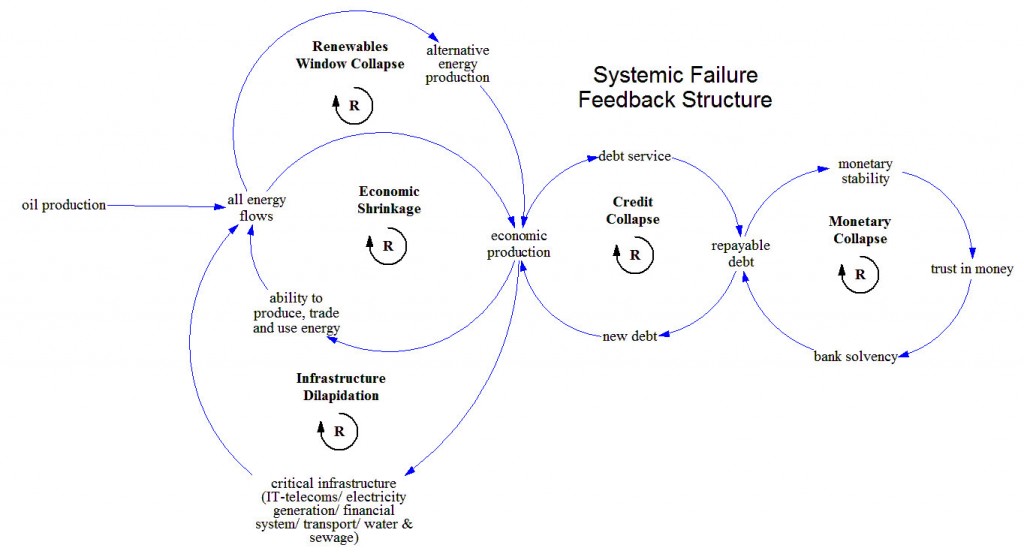
The convergence of crises and its implications are perceived only vaguely in Western societies, as elites have tried to disguise them in various ways. Unparalleled in our historical experience, they are bound to generate reactions that are both unique and unpredictable. How will the masses react to the acceleration of an already falling standard of living that for decades they have been led to believe would never happen? Under these conditions, how will ruling elites maintain social control?
Toward a creeping totalitarian agenda?
The mainstay of social control in the US has been the manufacture of consent since the rise of sophisticated advertising techniques drawing on subconscious drives, introduced early in the 20th century by Freud’s kinsman, Edward Bernays. Later, using the same techniques, Bernays added political and cultural manipulation to what had become an addiction to consumerism powered by the manufacture of desire.
The latest example of information manipulation for political and economic purposes was a psyop – a project to scare whole populations to accept a tyrannical and economically devastating set of lockdown policies and a dangerous and unneeded injection posing as a vaccine, which has reaped billions in profit to the pharmaceutical industry, all falsely justified as necessary against the spread of a virus that, for most people, posed no greater threat than a bad flu year. The policies included medical directives that contradicted empirically validated, reliable medical practices and suppressed the use of safe, effective therapies that could easily have controlled the disease. It was these policies, both medical and economic, that caused excess US deaths in the hundreds of thousands in the last two years, not the virus.
After two years, this project has revealed to astute observers the power, accumulated over decades, of the pharmaceutical industry to control by pressure or promise of benefit, a wide array of actors. This industry power enabled a small mafia of US health officials and industry billionaires to covertly create illegal genetically engineered biowarfare products – a virus and a gene therapy posing as a vaccine – and spring them on the world using a carefully orchestrated official narrative coordinated between government, mass media, internet social media platform monopolies, the research community, peer reviewed scientific journals and the vaccine industry, all delivering essentially identical messaging. The rollout of the pandemic narrative has been a spectacle of unprecedented information warfare against an unsuspecting public. The coordination and timing of the rollout reveal preparation and planning.
The unprecedented lockdown policies of the “pandemic” project achieved a secondary goal – to accelerate an already failing US economy – but deflect blame onto a virus rather than on ruling elites.
However, such an ambitious and elaborate project carries considerable risks. Incessant investigation has exposed the official narrative as a tissue of lies and forced medical authorities to backtrack on them one by one:
- In August, 2021, the WHO quietly reversed its directive for the PCR test, its primary weapon of deception in the official narrative, while allowing the false counting of Covid cases to continue until 2022 when the policy change would take effect.
- The deception that counted positive PCR results as cases of the disease was so blatant (because most of those who test positive are not sick) that medical authorities tried to cover it up by inventing a new category of Covid case – asymptomatics – people who are completely healthy but should somehow be counted as cases of Covid disease.
- The rigging of the count of hospitalizations and fatalities was finally admitted by the master of pandemic deception, Anthony Fauci himself, when he recently acknowledged the difference between cases with Covid and cases of Covid.
- Private investigation has also shown that the FDA’s language in the text of its emergency authorization of the injection carefully defines it as a “gene therapy” while falsely proclaiming it a vaccine to the public.
As the official pandemic narrative begins to lose traction with the public, ongoing economic consequences of its insane lockdown policies are combining to generate anger. Real inflation at retail for consumers has risen to around 16%, twice the official (rigged) rate, and producer inflation now at 21% promises higher future rates for consumers, even if current supply chain problems are solved.
Hence, as the convergence of crises accelerates the falling standard of living of most of the denizens of EurAnglia, elites are searching for new fear campaigns to keep order. The climate emergency scare campaign worked only on the Greta-like enviros. And another 9/11 type false flag to scare up a new foreign enemy has a poor chance to work again.
However, a society experiencing severe loss of trust in all major institutions is easy prey to totalitarian ideologies and policy solutions. The present such project of some elites is a centrally controlled digital technocracy. It is marketed as “smart technologies” that will solve all social and environmental problems. But it is so grandiose and global in scope that even if it gains some traction with the public, it will gradually spin out of control, as most totalitarian regimes have done in history.
Conclusion
Taken as a whole, the five convergent crises as they interact are unmatched in at least the last 500 years. The complexity of their ripple effects renders them unpredictable in detail in the short run, but due to resource exhaustion will at length end the industrial age. Elites appear ready to retain their privileges with authoritarian strategies.
The alternative of course is to resist in any possible way, distance oneself from mainstream institutions and economies, and build parallel structures. One can imagine it as a kind of shadow society in embryo that experiments with new civilizational forms – in expectation of the inevitable failure of totalitarian projects and the resultant disintegration and partition of large states. As elite projects experience confusion and disarray, their factional disputes will open crannies that provide opportunities for all sorts of resistance to emerge.
The irony in the situation is that the faster industrial civilization fades away the greater the suffering, but also the greater chance that a livable natural resource base will remain to support those who survive the descent.
[1] The Age of Modernity and its Discontents
End Games of Modern Civilization: false flag scare strategies and global cultural revolutions
More End Games of Modern Civilization: factional fractures in ruling elite policy
Clinging to the Titanic, or how to let go
[2] Hagens, N. J. 2020. “Economics for the future: Beyond the Superorganism”
[3] Excellent histories of financial mismanagement leading to crises of debt servitude are the works of anthropologist David Graeber, Debt: The First 5000 Years and political economist Michael Hudson, …and forgive them their debts: Lending, Foreclosure and Redemption From Bronze Age Finance to the Jubilee Year.
Topics: Political and Economic Organization, Social Futures, Peak Oil, Relocalization, Uncategorized | No Comments » |
Seasonal Greetings and State of the World
By Karl North | December 23, 2021
As the old Teutonic pagan rite approaches, we sally forth, hatchet in hand, seeking evergreens to deck the halls. O Tannenbaum! Conveniently, our mile-long track to the woodlot snakes through ten acres of clearcut logged by the previous owners in a vain attempt to cover their debts from a failed ‘back to the land’ venture. Wunderbar! Blossoming after 15 years with fragrant firs of all sizes, the clearcut is tannenbaum heaven.
So, Jane and I are still kicking, thankfully, cheerfully, albeit more slowly, still fattening a few lambs and growing a couple dozen fruits and vegetables, for us mainly, and the excess for the local food bank, and for bartering with neighbors.
Thanks to an unusual summer of rains, we enjoyed record harvests of most crops, much to the dismay of the Gretas of the world who,
unaware of the complexity of the earth system, assume that simulation modeling and its practitioners in the IPCC can predict the degree of human contribution to climate change.[1]
We are both experiencing the memory problems that come with age – difficulty dredging up words and phrases from deep memory, especially proper names, names of things and phenomena. (Jane says less with her). We each have somewhat different memory problems and can therefore help each other to trigger words and phrases otherwise lost to the archival cellar of the mind.
We are enjoying the active rural life despite increasing aches and pains, but also enjoy living in a kind of outback, on the geographical margin of the slow-moving disaster of a collapsing industrial civilization. That spectacle, however insufferable it will be for the victims, is a source of endless fascination, study and occasional writing for people like me trained and dedicated to the study of nature and its laws (systems ecology) and the study of the errant behaviors of its wholly owned subsidiary, human society (a subject sometimes known as political economy[2]). The many signs of collapse have been evident for decades, but are invisible to most people because conventional schooling provides little notion of how these complex systems work. Also, the mass media indoctrination machine constantly softens each gradual change into a new normal[3], affording an endless vista of safe spaces – hélas temporaire -
On the other hand, by now, a whole network of collapsists exists online across the planet with which I can discuss prospective scenarios, many of which I have written about for years. Unfortunately, allowed little access to the public, or disparaged as ‘chicken littles’, this network can only preach to the choir, at least when not yet censored by the Silicon Valley multi-billionaire moguls. An up-and-coming example of the genre, not yet deplatformed like many of its peers, is Titanic Lifeboat Academy.
An unusual proportion of these energy descent writers[4] are impressive polymaths, from the geologists who pioneered the warning of resource depletion, to systems ecologists and political economists, with whom I am grateful to learn. Most of the above are relatively rare in academia, because they are not made welcome. Some are good fiction writers who in my envious estimation are creating the most persuasive visions of likely futures. An example is James Kunstler’s World Made By Hand series. What follows is an attempt to put conspicuous short-term consequences of long-term collapse into some historical context.
The Decline of the West (and its Discontents)
The West claimed to be the civilization that embodied free expression. Now its censors run rampant.
The West once offered the world an example of prosperity and fairness, at least the best one available under a system of complete freedom of concentration of private capital – “A rising tide lifts all boats”. Now, the US and UK especially have become like banana republics, where a tiny obscenely rich elite exports the industrial economy to foreign shores and now presides over impoverished masses. Long ago The American Dream began to fade away.
As early as the 13th century in the Magna Carta, the West stood for the rights of individuals – to due process among others – and against dictatorship. Now after the various “patriot acts” and Corona virus decrees, anyone, including US citizens, can be held incognito in indefinite detention. Or simply be assassinated along with others on the white house extermination list.
The US proclaimed a system of government responsible to its people. Disasters of government negligence like Katrina, the Corona virus debacle, and now the grid failures across the plains states have repeatedly shown the world that its leaders don’t care for its citizens.
The West was the place where everything works. Now it is a picture of ghost towns and farm ruins in depressed rural economies and urban slums and dilapidation: the New York City subway is one of the worst in the world.
The gradual shrinkage of Western economies from global resource depletion is giving rise to a gradual increase in disorder of all sorts – military (resource wars), economic (the trap of massive debt financing and other shortsighted props), social (antifa/BLM/school shooting violence), political (Trump/Biden psychopathic governance), cultural (extreme ethnic polarization from extreme identity politics). The constituted authorities either cannot or dare not explain underlying causes, all to the increasing discredit of mainstream institutions – govt, mass media, medicine, academia – for Americans all across the political spectrum.
The dilemma of the elites[5]
Faced with a permanent decline of industrial civilization that they cannot prevent, and a narrative of endless progress with which they have indoctrinated the masses, ruling elites first sought props to give the illusion of prosperity-as-usual. An impressive one has been years of money printing to replace real wealth production, among whose consequences has been an obscenely overvalued stock market. As the crisis deepened, elites staged false flag episodes (9/11 and war on terror, Covid scamdemic) designed to scare the public into accepting increasingly tyrannical policies of social control (Patriot acts, strict media control of information, internet censorship, vax passports and mandates). One result is different forms of mass psychosis, a kind of collective hypnotism that persuades people to grasp at straws so outlandish that they would be ashamed of such behavior in normal times.
Meanwhile, our rulers are casting around for degrowth strategies, starting in the US and Western Europe – the first area to experience degrowth – a plan that will insure degrowth for us that preserves growth and prosperity for them. Evidence that at least one faction of transnational capital and national ruling elites realize the implications of inevitable degrowth and the need for an elite-orchestrated version is the “Great Reset” narrative promoted in Davos meetings of the World Economic Forum.[6] Such narratives are a marketing plan[7] that hides a more radical scheme by promoting a ‘reset’ as green, socially just and technologically cool. So far, this propaganda is aimed at political liberals who have tended to accept its implicit totalitarian aspects as a necessary ‘war economy’ (think WWII ration book). By rolling it out slowly like a slow-release drug, elites hope to avoid resistance.
The actual plan was quietly elaborated by the G7 central banker elite at its annual gathering in Jackson Hole, Wyoming, and given a façade of public sponsorship as UN Agenda 2030[8]. The central hub of its many components is a scheme to solve the two looming global crises – the next financial crash and the end of the dollar as world’s reserve currency. Called Going Direct Reset[9], it resets global finance in a centrally controlled, universal digital currency, using 5G wireless to connect everyone, then uses control of money in combination with existing surveillance state technology to minutely regulate individual behavior with rewards and penalties, along the lines of the Chinese credit system. If this agenda is real and makes any headway, can it work? I address this question in the next section from my perspective as a holistic thinker.
The Great Unraveling
“The world functions in wholes; we must manage it as such, or court failure” – Alan Savory
The connectedness of the universe in which we live presents such a complexity of interactions and interdependencies that has never yielded completely to the efforts to understand and manage it.
Hence, what we call “science” has mostly retreated to laboratory conditions where reduced
interactions can generate predictable results. The trouble with that stratagem is that when the products of science are brought out into the real world and applied, albeit often in dazzling technologies, eventually all sorts of inconvenient consequences and long-term ripple effects occur. Our bodies, for example, present such complex wholes that medicine men (and women) often must resort to treating symptoms because we don’t know enough to do any better. We cover up the limitations of medical knowledge with fancy language – NSAIDs, non-steroid anti-inflammation drugs, for example, are just pain killers.
Likewise, the clusters of interacting species we call ecosystems and human societies are complex wholes that pose stumbling blocks to understanding how they work, and therefore to management efforts. Students of complexity observe that throughout history, elaborate attempts to shape whole societies eventually break down as events spin out of control. Apparently robust social constructs like the Roman Empire ultimately collapsed in chaos and disorder.
Applying the revelations of complexity science and its understanding of the limits of the advancement of knowledge, what can we say about the prospects of the extravagant plan of global private capital to address the breakdown of industrial civilization with a central banker controlled digital technocracy?
Many big picture thinkers like Catherine Austin Fitts, longtime relocalization advocates like myself, share my view, voiced in Who’s Afraid of the Great Reset? Fitts says the blueprint of the international banker elite is going to be too complicated, too outside the laws of nature, but extremely messy (think Iraq ever since the attempt at US subjugation began in the first Gulf War), and will therefore fail, perhaps not for the lack of trying. Fitts says (and I agree) that people should face this unprecedented situation squarely, and begin to build a relocalized economy, a parallel economy from the bottom up.
What is the evidence that the Great Reset will fail? First, regarding failures of such grandiose schemes, there are a lot to choose from. Consider the track record of the CIA, tasked, as agent of elite interests residing inside the US government, with interference in other nations, interventions that had to be clandestine because they violated international law, the UN Charter, and the US Constitution and proclaimed US ideals of foreign relations. Most of its so-called color revolutions either failed outright or turned the victim nations into economic, political and ethnic disasters. The list is long – Russia in the 1990s, the former Yugoslavia, the former Ukraine, Afghanistan, Iraq, Syria, Somalia, Sudan, Yemen, Venezuela, and most recently Belarus, one that failed to even get off the ground. And yet the CIA is supposed to be the main US source of intelligence about world affairs.
Closer to home, another example of a power elite scheme going awry began with the attempt, starting already in the 2016 election campaign, to remove by fraudulent means the elected Trump administration. First, it fueled the existing standard divide-and-rule political polarization strategy by making the mass media into the attack dog of the Democratic Party. The result was a mass media that dropped all pretense of journalistic neutrality and became deeply discredited among political conservatives already prone to criticize it as a tool of liberalism.
Then, when medical authorities rolled out the ‘pandemic of fear’ narrative (whose crimes under the direction of Anthony Fauci[10] I have detailed elsewhere), the conservative pole, half the electorate, no longer disposed to believe anything coming from the mass media, was effectively immunized as it were, against the official pandemic narrative trumpeted from Washington and amplified faithfully by the mass media from CNN to NPR.
The result, ironically, was that conservatives, which liberals often disparaged as gullible, redneck illiterates, began to question the official pandemic story while liberals, now habituated to trusting the media as a political ally, bought the story without question. Courageous scientists and medical professionals, aware of the science-free nature of most of the policies decreed by corrupt government medical authorities, organized to fight back[11], but were allowed no access to the public via the mass media. When medical professionals were forced to turn to politically conservative websites and media platforms to expose the official narrative and to reveal cheap and effective therapies that can control Covid 19 as no worse than a bad flu year, conservatives actually became more knowledgeable about the virus and the real nature of the ‘pandemic’ than most liberals. Thus, when the Biden administration and European governments made the fatal mistake of trying to impose a vax mandate, a vigorous resistance took form.
Some critics claim that the goal of the pandemic policies was never merely to generate obscene profits in the pharmaceutical industry, but rather to generate fear of a supposed medical crisis as justification for imposing the next step in a process of habituating Western societies to a totalitarian order. If this were the goal, an open-ended vax mandate certainly fits into the plan. Discovery that what first looked like a botched response to a new virus has become an issue of individual freedom and human rights has caused a violent reaction in Europe, with mass protests occurring over many months. Indeed, the whole official pandemic narrative is unravelling in many directions[12]. Those who still can’t see it happening will no doubt have the opportunity in the near future. Thus, once again, a grandiose scheme of the powerful has encountered the unpredictable nature of our complex universe.
International Speakers Address Rallies in Europe Against the Global War on Freedom, in Medical Disguise
On November 12th and 13th 2021, experts from around the world attended rallies and press conferences in Switzerland and Italy, to support the worldwide resistance against the global war on freedom and democracy.
Blessed are the peasants….
…for they shall inherit the earth. Ignored by elites as remnants of a primitive past, peasants, over fifty percent of humanity by some counts, represent a chance for survival of the species as industrial economies, costly luxuries of the fossil fuel age, gradually fade away. I have explored the potential of this scenario in “The quality of peasant life: a scenario for survival” and “The peasants shall inherit the earth”, as an option to explore by younger generations who might be looking for ways to navigate the energy descent.
Afterthoughts
I am grateful for having lived an incredibly full and exciting life by my rather strict and unusual standards, and enjoy memories of almost all of it, despite the stresses occasioned by constantly having to adapt to the conditions of life in each novel adventure that we embarked on. We engaged deeply with other cultures and worked with people in many places – Geneva, Paris, New York, Bamako, Havana, a Zapatista rebel village in Chiapas, six years in this mountain village in the Catalan Pyrenees:
Most of these locations were at the top of their game at the time we encountered them, but not so much now, according to reports. So, the global tourism that appeals to many retirees is not a temptation. I, for one, am content to live with excellent memories. Here is one from our farm in upstate NY, caught at full gallop by a farm apprentice, the intrepid cameraman Brian McKay, circa 1995, replete with sleighbells ringing.
And another, five years later, after horses and driver had aged to a more sedate trot.
With such adventures to look back on, I can safely say that I have achieved most of my great expectations, however strange they may seem to the average person.
May your new year be as satisfying as the last,
Karl
[1] Faced with the vast complexity of the earth-sun system, with all its cycles of variable time frame (such as solar maxima and minima, ice ages, etc.) and feedback loops, many unknown, most experienced practitioners in using the method are saying there is no way that system dynamics simulation modeling can show to what extent emissions from fossil fuel use are a significant factor in climate behavior. Sure, we can prove tiny pieces of the puzzle like the causal relation between fossil fuel burning and greenhouse gas production, but so what? Water vapor is a far more potent greenhouse gas, is constantly changing, and has very different effects in different layers of the atmosphere. There is enough complexity in that one variable alone to give one pause.
[2] Political economy is an approach to the study of human society grounded in an understanding of its power structure – including its locus and concentrations and its means and avenues of execution in end point decision making.
[3] See, for example, the latest by C J Hopkins, The Year of the New Normal Fascist
[4] An early example is The Limits to Growth project, originally published in 1972.
[5] See my End Games of Modern Civilization: false flag scare strategies and global cultural revolutions
for a more detailed view.
[6] https://www.weforum.org/great-reset,
[7] Agenda 2030/Great Reset marketing video for dummies – 8 predictions for the world in 2030
[8] Transforming Our World: The 2030 Agenda for Sustainable Development
[9] https://home.solari.com/coming-thursday-2020-annual-wrap-up-theme-the-going-direct-reset-the-central-bankers-make-their-move/
[10] For the whole chilling story, see Robert F. Kennedy Jr.’s just published The Real Anthony Fauci; Bill Gates, Big Pharma, and the Global War on Democracy and Public Health. If you’ve been buying the official Covid party line and scare campaign; the first 100 pages alone will knock your socks off. Most of the revelations have long been available in online alternative news sites, but Kennedy is the first to break through mass media censorship.
[11] https://americasfrontlinedoctors.org/, German Corona Investigative Committee,
https://covid19criticalcare.com/covid-19-protocols/math-plus-protocol/
[12] https://doctors4covidethics.org/
Topics: Political and Economic Organization, Social Futures, Peak Oil, Relocalization, Uncategorized | No Comments » |
